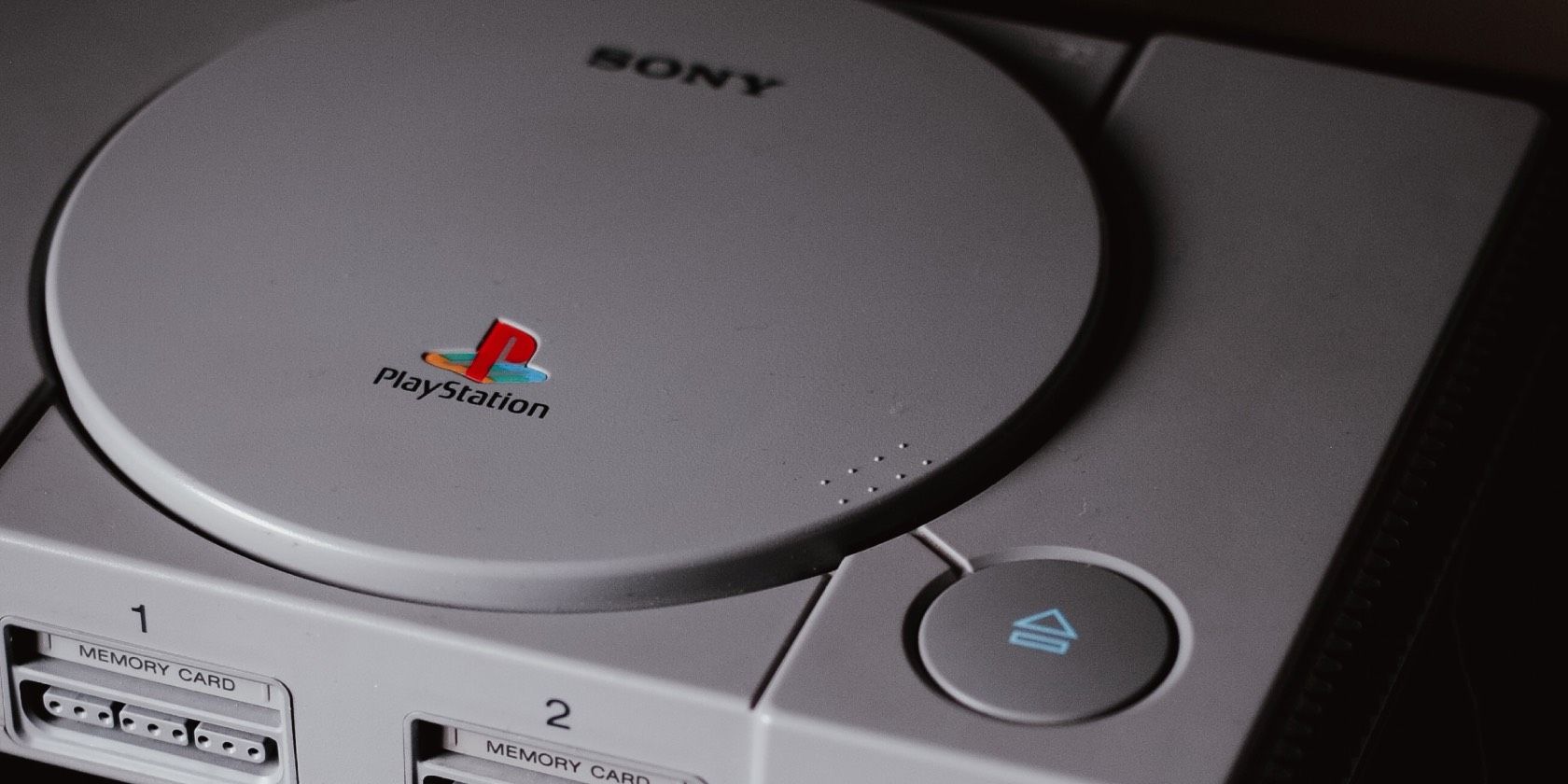Ronald.phillips
Shared posts
The Myths of Ransomware Attacks and How To Mitigate Risk
Obi-Wan Kenobi Finally Explains One Of The Oldest Star Wars Relationships
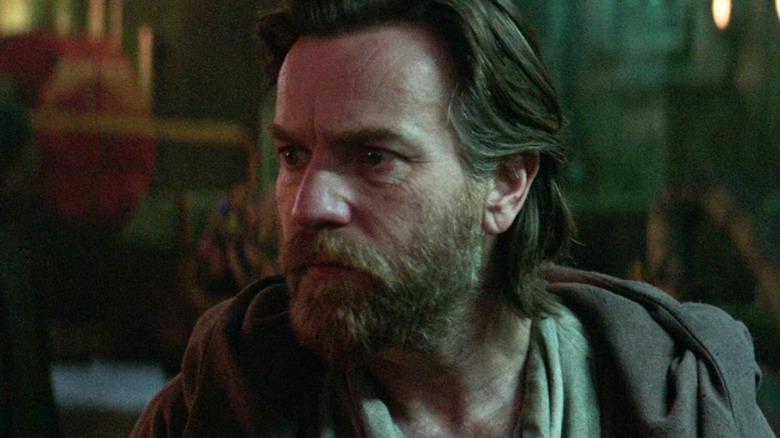
The following contains spoilers for the first two episodes of "Obi-Wan Kenobi."
"Help me, Obi-Wan Kenobi. You're my only hope."
If you're a "Star Wars" fan (heck, even if you aren't) you know that line like the back of your head. It's since become a calling card for Princess Leia Organa (Carrie Fisher), as it's without a doubt her most famous line from any "Star Wars" movie she appeared in. Leia first uttered those words in "Star Wars: Episode IV — A New Hope," just before being captured by Darth Vader and his Imperial forces. "Years ago, you served my father in the Clone Wars," Leia tells Kenobi via hologram. "Now he begs you to help him in his struggle against the Empire."
As iconic as this scene has become, it left quite a plot hole in its wake — and the "Star Wars" saga has been endeavoring to fill it, bit by bit, for over 40 years. The prequel trilogy introduced us to Leia's adopted father, Bail Organa (Jimmy Smits), and established his relationship to Obi-Wan Kenobi. And "Rogue One: A Star Wars Story" laid the foundation for Bail and Leia's work in the Rebellion. But how exactly did Leia know Obi-Wan? Did she even really know him at all? And how did she know to contact him in "A New Hope"? How exactly did he become Leia's "only hope"?
For a long time, fans had more questions than they did answers. But with "Obi-Wan Kenobi," that 40-year plot hole is finally being filled.
There Is Another
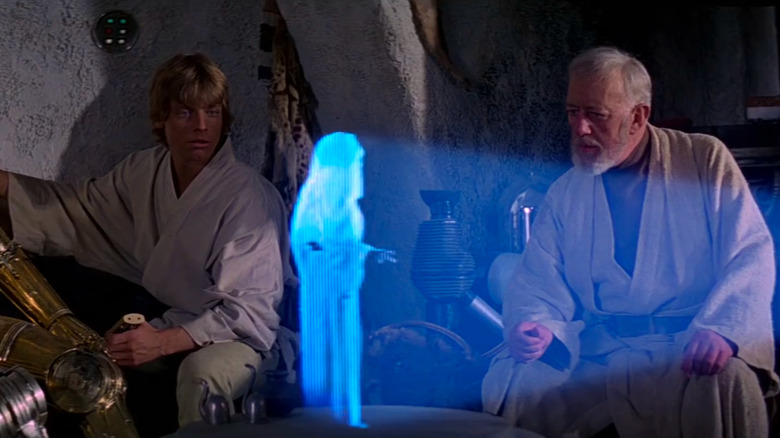
"Obi-Wan Kenobi" may initially be focused on Obi-Wan's trials on Tatooine — avoiding Inquisitors, guarding Luke Skywalker, and trying (or failing) to process his prequel-era trauma — but Lucasfilm's latest "Star Wars" series makes it clear that there's adventure elsewhere too. "Kenobi" splits its time between that infamous sandy planet and the planet of Alderaan, where a 10-year-old Leia resides with her adoptive parents, Bail and Breha Organa. Though Obi-Wan is pretty content to stay on Tatooine for the rest of his natural life, the Sith Inquisitor Reva (Moses Ingram) is determined to draw him out of his self-imposed exile, and present him as a gift to Darth Vader.
Reva enlists the help of a few mercenaries (led by Flea, of Red Hot Chili Peppers fame) to kidnap the young princess on Alderaan. The mercs leave absolutely no trace of their whereabouts, meaning that the Organas will have to enlist the help of someone very special to bring their daughter home. Fortunately, Bail still has Obi-Wan on speed dial, and he makes quick work of contacting the former Jedi.
Of course, Obi-Wan refuses at first: It's been 10 years since he's flexed those Jedi muscles, after all. Plus, Bail is a senator with all sorts of connections, legal or otherwise. Why does he seek out the help of a Jedi when a bounty hunter or another mercenary could just as easily find his daughter?
To Each Their Own
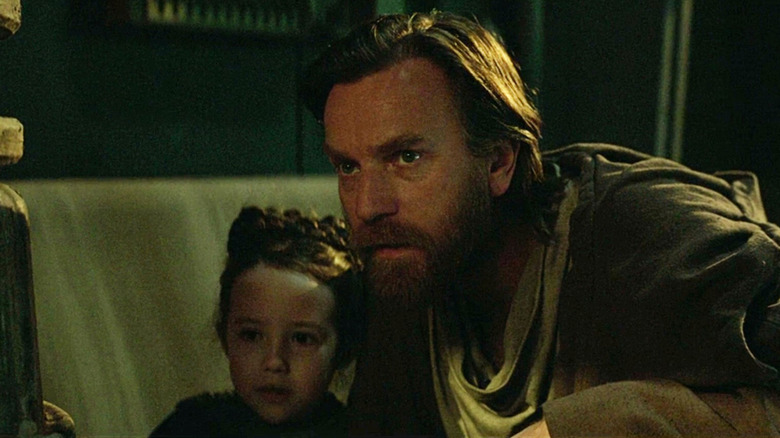
The short answer: Bail still trusts Obi-Wan the most out of everyone he knows, even after all these years of radio silence. "Only you know how important she really is," he tells Kenobi. It's a great way of shaking Obi-Wan out of his downward spiral ... and of pointing out his hypocrisy. He's set on "protecting" Luke by watching over him on Tatooine, but it's become clear that he's using his duty as an excuse to keep himself hidden. But Leia is just as important to the cause, and just as worthy of his attention.
Obi-Wan and Bail's continual connection is also a wonderful mirror to Obi-Wan's relationship to Owen Lars (Joel Edgerton), Luke's uncle. Unlike Bail, Owen wants nothing to do with Obi-Wan whatsoever. He's determined to protect Luke in his own way, and he doesn't need any Jedi help whatsoever. That's, of course, because of all that went down with Anakin. Owen doesn't want Luke to tread that same path his father walked. But Bail, in refreshing contrast, understands that some things were beyond even Obi-Wan's control. He couldn't save Anakin, but his kids — both of his kids — could still use some guidance from the old Jedi.
No One's Ever Really Gone
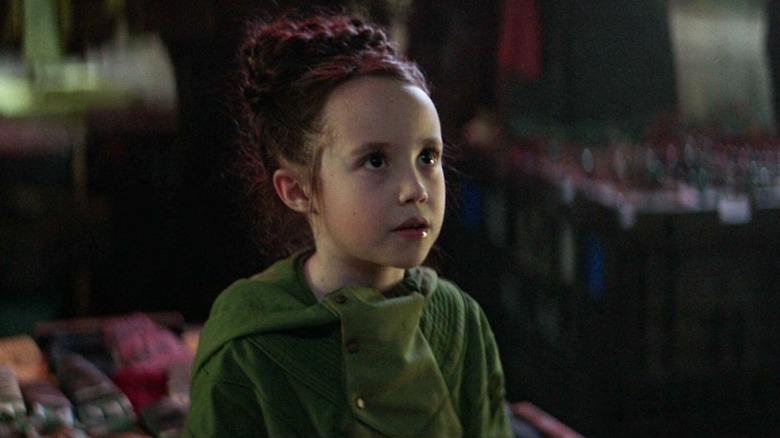
And of course, Bail is absolutely right. Baby Leia is as precocious, headstrong, and independent as they come. Though she's wise beyond her years — a fact that surprises even Obi-Wan — she does still need guidance, and most importantly: protection. Her dynamic with Obi-Wan doesn't start off great (that tends to happen when you're kidnapped), but it evolves quickly from tepid trust to an almost "lone wolf meets foundling" relationship. It's heartwarming to watch Leia bring Kenobi out of his comfort zone, and reciprocate the sort of connection he's been yearning for with Luke.
So much emphasis has been placed on Obi-Wan's relationship with Anakin and his son, so it's easy to forget that the same relationship was once also a possibility for Leia. It's great to see "Kenobi" honor their potential, however briefly, and the legacy of Leia's late mother, Padmé Amidala. She and Obi-Wan were once close too, and if his guilt-ridden nightmare in episode 1 is any indication, Kenobi carries just as much regret over her fate as Anakin's. But by protecting Leia, Obi-Wan is starting to look at the past in a different light. Through this responsibility, it's clear that redemption is still possible for Obi-Wan. More than that, it strengthens his bond to the people he lost, as that connection lives on — not just in Luke, but in Leia as well.
The two-part premiere of "Obi-Wan Kenobi" is now streaming on Disney+.
Read this next: The 20 Best Clone Wars Episodes Ranked
The post Obi-Wan Kenobi Finally Explains One of the Oldest Star Wars Relationships appeared first on /Film.
The 14 Best Ray Liotta Movies, Ranked
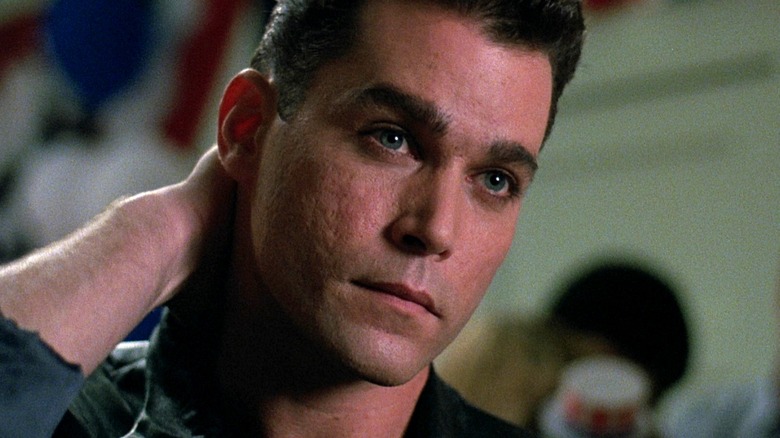
My favorite Ray Liotta performance won't make this list. Technically, it can't.
FX's "The League" is a television show that's as broad as a half-hour situational comedy gets. It's the story of terrible people doing terrible things in the name of their bad fantasy football teams. In one of the show's best episodes, Ruxin (Nick Kroll) gets chummy with his boss, Mr. Hudabega (Ray Liotta), a fastidious germaphobe. Ruxin is sick and, when he tries to hide it during a meeting, Hudabega goes full Liotta. "There's no crime in being sick," he coos before leaning forward and grimacing, "The crime is not telling other people that you're sick."
This moment is Ray Liotta in a nutshell. No actor could vacillate from funny to frightening more fleetly. No performer could make you feel like that hair-trigger switch was both human and not of this galaxy. When Liotta stopped moving, so did the Earth — that was the extent of his gravity. Whether he was eerily still as Uncle Sal in "The Many Saints of Newark" or shaking audiences' souls with one of the top-five laughs ever committed to celluloid, Ray Liotta changed the world of cinema forever. As good as he was on television, we must celebrate his contributions to film — and life — accordingly.
Here are the 14 best Ray Liotta movies, ranked.
Youth In Revolt
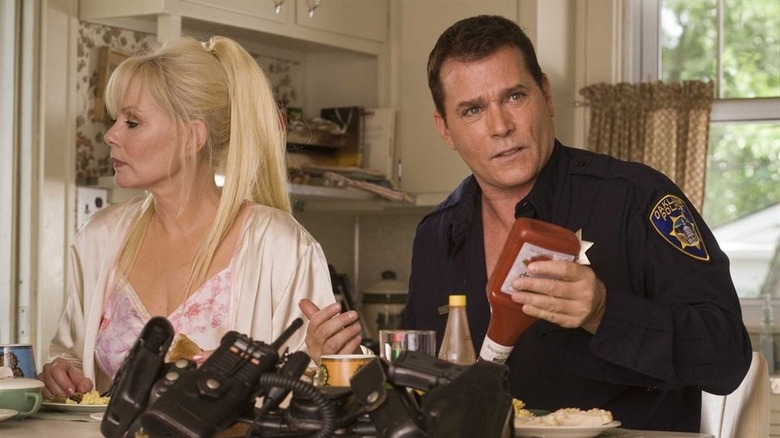
"Youth in Revolt" is best remembered as Michael Cera's crossover moment. In Miguel Artera's spry, heartfelt adaptation of C.D. Payne's epistolary novel, the "Arrested Development" star stretches far beyond George Michael Bluth in the dual roles of Nick Twisp and François Dillinger. Dillenger is Twisp's mustachioed alter ego, a projection that Twist creates to get the girl of his dreams (Portia Doubleday) and move through life more pleasurably. This means getting high on mushrooms, stealing multiple cars, and generally causing chaos. Cera is unquestionably excellent in both roles, and the movie has a number of minor but excellent pleasures. Ray Liotta is one of them.
It's remarkable how often Liotta played characters that skirted both sides of the law. His resume is filled with cops who look the other way and criminals whose humanity hits audiences like a sucker punch. In "Youth in Revolt," Liotta offers up the former as officer Lance Wescott, Nick's mom's new boyfriend. After Nick's first bout of auto theft, Wescott agrees to report the car as stolen if Nick will go and live with his father. The moment is loaded. Wescott is making a play for what he wants but, as Liotta's performance makes clear, he recognizes a sliver of himself in Nick, too, and acts accordingly. Liotta carries the scene, and is one of many elements that elevate "Youth In Revolt" above standard coming-of-age fare.
The Many Saints Of Newark
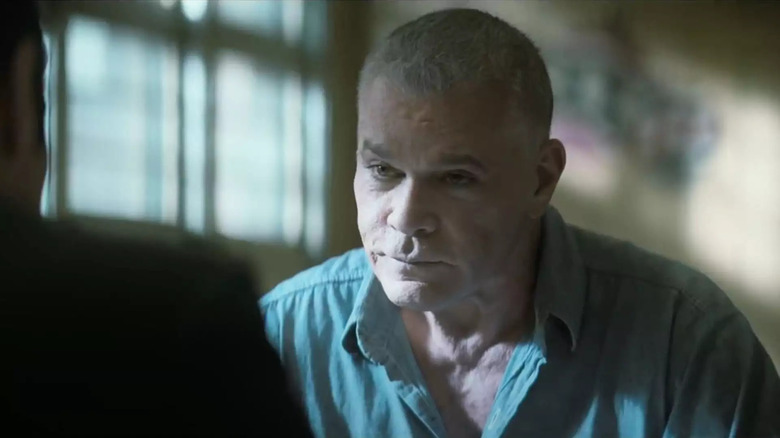
"The Many Saints of Newark" is not Ray Liotta's last film. The New Jersey-born actor will soon be seen in the Taron Egerton headliner "Black Bird" and Elizabeth Banks' beautifully titled "Cocaine Bear." All the same, David Chase's Alan Taylor-directed feature-length "Sopranos" prequel works as an inadvertent swan song for a tremendous talent gone too soon.
"The Sopranos" redefined TV as we know it, and is one of the seminal mob tales of the 20th and 21st centuries. Liotta was in many of those, too, including both "Goodfellas" and "Killing Me Softly." So, it's only fitting that Chase would find room for him in "The Many Saints of Newark," especially since Liotta famously passed on playing Tony Soprano before James Gandolfini was cast in the role.
And yet, the characters that Liotta plays in the film are still somehow even more compelling than you might imagine. Liotta takes on two roles in "The Many Saints of Newark": twin brothers Aldo "Hollywood Dick" and Salvatore "Sally" Moltisanti. Aldo is closer to the classic Liotta archetype, full of coiled rage and violent pivots. By contrast, Sal is remarkably still. He enters the film, ghost-like, in the wake of Dick's passing. Every scene he's in takes place at a conjugal visit table, meaning there's minimal movement in these moments. There's just Ray Liotta, bearing his soul while saying very little and interrogating the nature of Uncle Dickie (Alessandro Nivola)'s heart. It ends up feeling like Liotta is in direct conversation with the genre and type of characters that made him famous. For a performer like Liotta, that's one heck of a curtain call.
Kill The Messenger
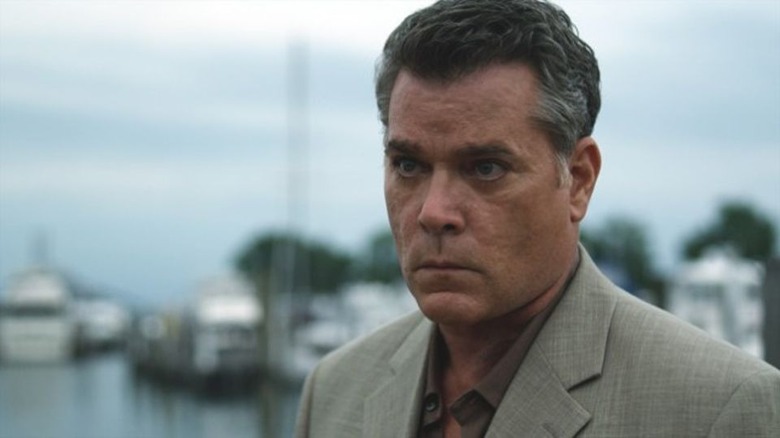
"Kill the Messenger" is one of the more underrated titles on Ray Liotta's resume. To be frank, it's one of the more underrated titles on its whole cast's CVs. A sterling crime drama directed with wit and verve by Michael Cuesta ("L.I.E.," "American Assassin"), "Kill the Messenger" deserves credit for its clear but rambunctious retelling of San Jose Mercury News reporter Gary Webb's attempt to reveal the ties between the CIA and a drug-smuggling ring. It's also one of the few movies post-"The Hurt Locker" that fully understands how to use Jeremy Renner's star power. Renner is on fire here as Webb, a journalist whose swagger is less boisterous than it is innate, even in the face of brewing violence. But the whole ensemble is excellent, from Andy Garcia to the late Michael K. Williams to, yes, the great Ray Liotta.
"Kill the Messenger" is a fun Liotta film because the actor lets other thespians do the heavy lifting. Although Liotta's third-act arrival as John Cullen, a CIA source, is essential to the film's plot, its engine is powered by Williams' electric portrayal of "Freeway" Rick Ross and an incredibly ominous Michael Sheen. A movie is doing something right if a heavy hitter like Liotta only has to come off the bench for a few minutes of screen time; "Kill the Messenger" is one of those movies.
Identity
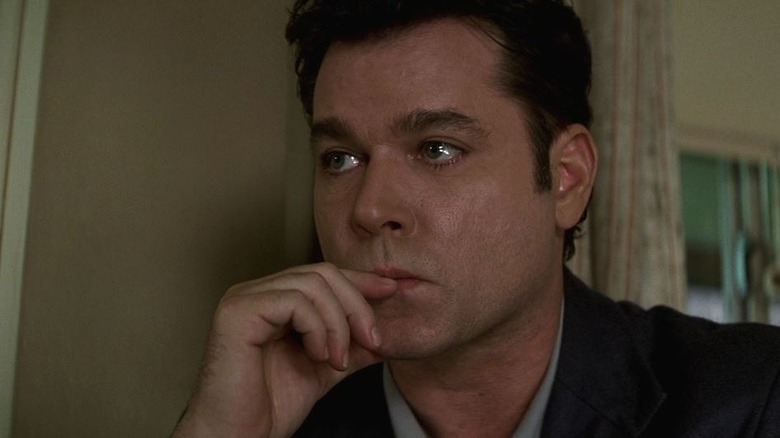
"Identity" is not the best movie on this list, but it's arguably my favorite. It's my favorite in the way that every single one of us has a preferred fast-casual food chain, one that we swear up and down is actually great, and not just a good place to eat because it's easy to access and its menu is uncomplicated.
"Identity" is similarly easy to get into. It's convoluted, but not complicated. Several strangers played by John Cusack, Amanda Peet, Ray Liotta, and countless other wonderful actors arrive at a motel in the middle of a thunderous rainstorm. Everyone gets stuck, and people start dying. As the bodies pile up, James Mangold's dark murder mystery becomes a Gothic deconstruction. Twists become red herrings, and red herrings become the keys to unlocking an increasingly wild story.
Sometimes, that's all you need. For every cinematic masterpiece that hits theaters, there should be a fast-casual film that hits the spot instantly and makes you feel like a million bucks. "Identity" is exactly that kind of film. Go ahead and order up.
Field Of Dreams
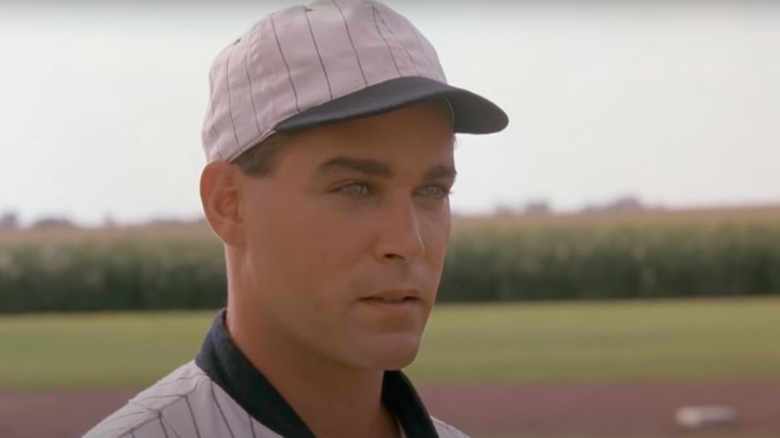
Liotta is the antithesis of "Field of Dreams," the celebrated baseball movie that he happens to star in. Actors are part of ensembles, and ensembles give voice to a project's heart and soul. Technically, Liotta fulfills that duty as the ghost of Shoeless Joe Jackson, one of many ball players that Ray Kinsella (Kevin Costner) encounters when he builds a magical baseball diamond.
But "Field of Dreams" is as deliberately saccharine, sweeping, and big-hearted as its Midwest setting. Shoeless Joe Jackson isn't. Jackson is as rooted in the Great Depression as he is in a family-friendly sports story. Accordingly, Liotta's performance fights "Field of Dreams" at every turn, finding shades of anger, desperation, and competitive drive that few actors could. If Ray Kinsella is afraid of aging without having achieved anything, Shoeless Joe Jackson is a man who's achieved plenty, and for whom that's still not enough. Liotta provides the contrast that makes "Field of Dreams" soar. It simply wouldn't be successful without him.
Marriage Story
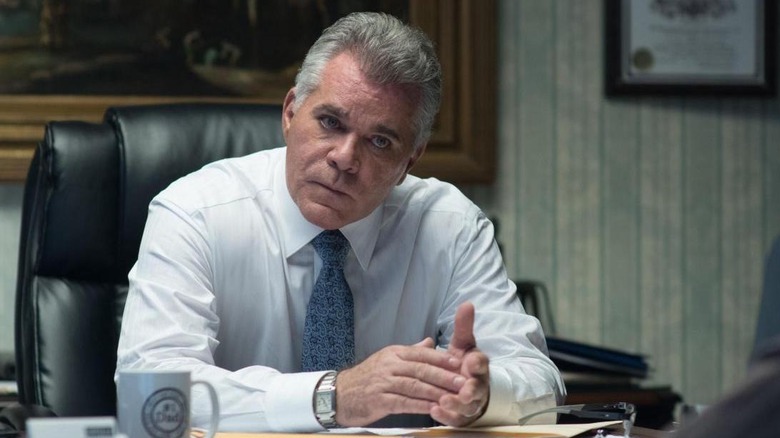
The outpouring of love for Ray Liotta in the wake of his passing confirms his sterling reputation. The initial response to Noah Baumbach's "Marriage Story," however, proves that Ray Liotta was also highly underrated. How else to explain critics praising the work of Scarlett Johannson, Adam Driver, and a mesmerizing Laura Dern but, by and large, failing to even mention Liotta?
In "Marriage Story," Liotta plays Jay Marotta, the second lawyer that Charlie Barber (Driver) hires to oversee his divorce proceedings. Marotta isn't above fighting dirty. When the case moves to court, Marotta engineers a series of character assassinations against Charlie's soon-to-be-ex-wife, Nicole (Johannson), and threatens legal action after Nicole hacks Charlie's emails.
If "Marriage Story" is the tale of how love can turn caustic without ever really going away, Marotta is the embodiment of what happens when cynicism takes the driver's seat. His history is written all over his face. It's seen through every action he takes as a lawyer. He's an essential counterpoint to Dern's Nora Fanshaw. "Marriage Story" is a very good film, but it's on this list because Liotta deserved more praise for his sterling performance.
No Sudden Move
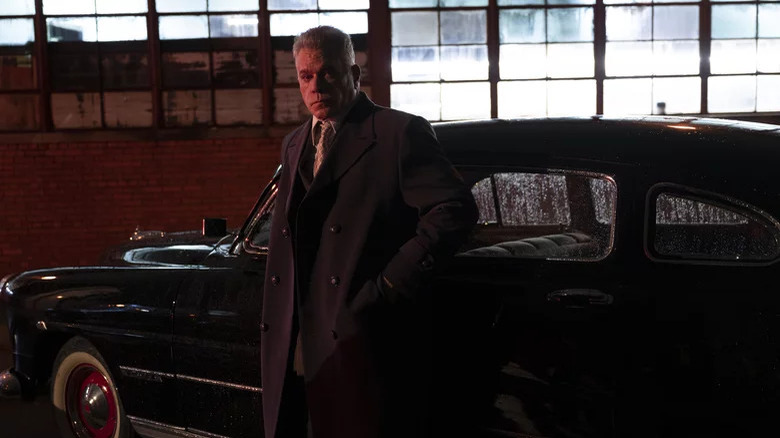
In sports, a "heat check" occurs when an athlete tests how well they're playing on any given day. If they're playing basketball, maybe they shoot from well beyond the three-point arc. If they're golfers, they may aim for a hole in one. In either instance, the athlete already knows they're good; they're trying to determine their potential for greatness.
Steven Soderbergh has been on a heat check his whole career. Every project he takes on tests his ability and range. In the last five years, Soderbergh has made a techno thriller ("Kimi"), an off-season sports drama ("High Flying Bird"), and a comedy about money laundering ("The Laundromat"). None have diluted the power of his resume. The man just keeps sinking baskets.
"No Sudden Move" is another one of Soderbergh's recent hits. On paper, this 2021 period crime caper might be Soderbergh's least ambitious. He reunites with "Ocean's" trilogy stars Don Cheadle and Matt Damon for the production, and the are obvious strands of "Out of Sight" and "The Limey" in its DNA.
And yet, "No Sudden Move" feels like a wholly original entry on Soderbergh's filmography for two reasons. First, the script by Ed Solomon ("Men in Black," the Soderbergh HBO drama "Mosaic") elucidates the private lives of its publicly stoic ne'er-do-wells with considerable grace and tact. Second, the cast makes those characters humans first and criminals second. This is seen most clearly through Ray Liotta's Frank Capelli, a role that could have been a riff on Henry Hill from "Goodfellas," but is instead beguiling and moving. That's a heat check if there ever was one.
Observe And Report
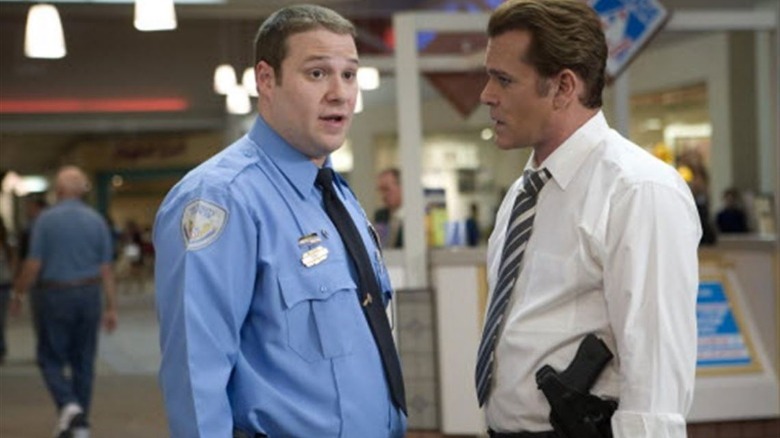
It is a tragedy that "Observe and Report" grows more prescient with every passing year.
That's not an exaggeration. Jody Hill's dark comedy concerns a mentally unstable mall cop named Ronnie (Seth Rogen) who uses the pursuit of a flasher as a means to join the police force. Throughout the film, he also endures psychological torment at the hands of Ray Liotta's Detective Harrison.
Despite his well-meaning gestures, Ronnie displays vigilante-like tendencies, and all of the chaos builds, chillingly, to a psych evaluation to see if Ronnie is mentally fit to join the police force. During the evaluation, Ronnie describes a recurring dream: "It starts on a playground ... and then you hear a rumbling. And over the horizon comes a black cloud made of cancer and puss ... You know what happens next? Out steps me, wielding the biggest f***ing shotgun you've ever seen in your life. And you know what I do? I blow every f***ing thing away." In Ronnie's mind, the world thanks him for this. He's just a guy with a gun doing God's good work.
We have seen Ronnies in modern day America more times than we can count. Sometimes, they're wearing uniforms. Sometimes, they have manifestos. Either way, we see them again and again and again. Few films have probed the psychology of Ronnies more expertly than "Observe and Report," and certainly none of the others have been this funny. But in modern day America, we often laugh to keep from crying. That's "Observe and Report" to a T.
The Place Beyond The Pines
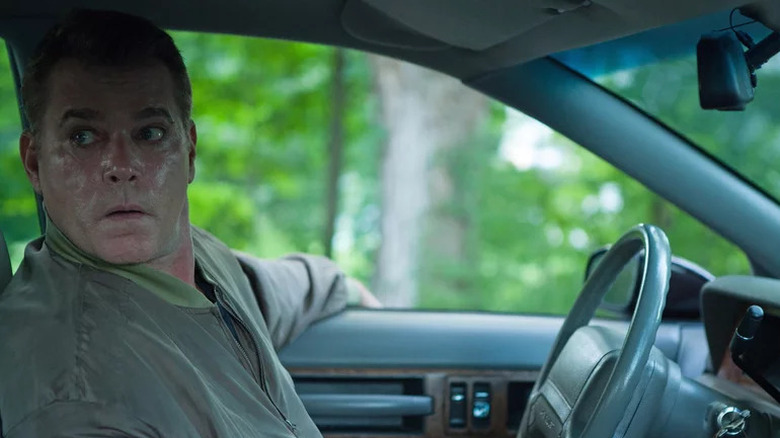
There are better movies than "The Place Beyond the Pines," but few that are more confident. Derek Cianfrance ("Blue Valentine," "I Know This Much Is True") begins his sprawling, multi-generational crime drama with an extended tracking shot. By the third act, we've followed the story of a robbery gone wrong 20 years out from the inciting incident and are dealing with the fallout of corruption and existential questions about familial fate in equal measure. Simply put, this movie goes for it.
Like many films, "The Place Beyond the Pines" sees Ray Liotta play a cop on the take, but "Pines" finds new wrinkles for Liotta's favorite archetype. During the film's second act, Liotta's Peter Deluca arrives at fellow officer Avery Cross' (Bradley Cooper) house. He is unannounced. He stays for dinner. To say why this moment plays out like a horror show would spoil the fun, but suffice it to say that the unbearable tension results from Cianfrance's assured direction and Liotta's coiled performance, which erupts into bursts of menacing and pointed laughter. It, like "Pines," is an American treasure.
Narc
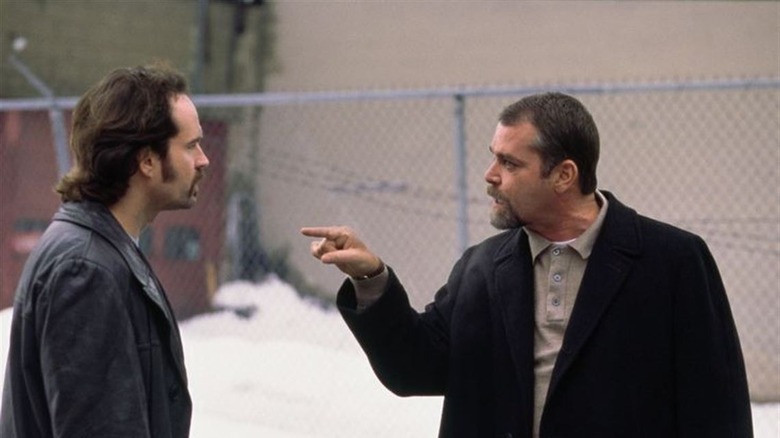
The "Narc" trailer is bookended by two quotes, one directly from Joe Carnahan's undercover cop thriller, and the other from French writer Voltaire. This is unusual and unexpected. So is "Narc."
The Voltaire quote reads as follows: "To the living we owe respect, but to the dead, we only owe the truth." This is the crux of the engine that powers "Narc." Suspended undercover officer Nick Tellis (a career-best Jason Patric) is brought back onto the force to investigate the slaying of a fellow officer, Michael Calvess. That means teaming with Henry Oak (Ray Liotta), Calvess' potentially unstable partner. As Tellis and Oak plumb the Detroit underground for Calvess' killer, their pursuit of the truth exposes their fundamental disrespect and mistrust of both city's poorer residents and, eventually, each other. That's where the other quote from the trailer comes in. "This has nothing to do with rules and regulations," Oak snarls, "and everything to do with right and wrong."
Who determines the rules in a world where chaos reigns? What happens when law enforcers cannot tell the difference between a crime and something more innocent? These are the questions "Narc" asks, but it doesn't offer any easy answers. What "Narc" does make crystal clear, however, is Liotta's talent. It is almost impossible to pick Liotta's best performance, but his fully-committed turn as Henry Oak is one for the record books.
Something Wild
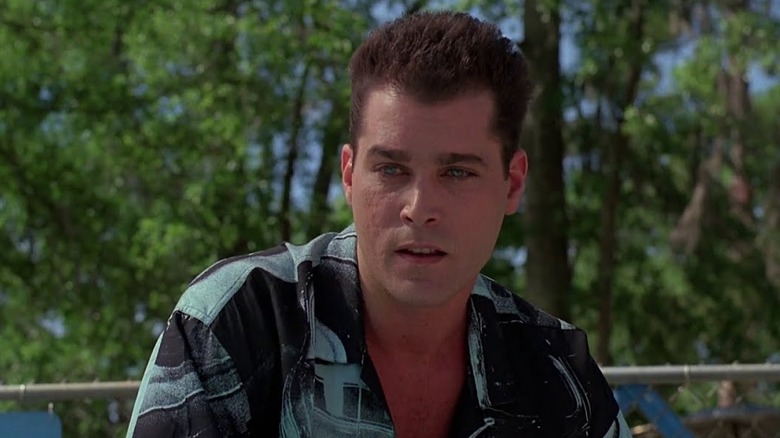
Ray Liotta could literally change the course of a movie. Just look at his second film. Even before Liotta appears, "Something Wild" is something wonderful. Directed by the irreplaceable Jonathan Demme, it's an action-comedy full of tonal twists and turns that features an irresistible Melanie Griffith and a charming Jeff Daniels. Its primary romance is singular, sleazy, and tons of fun. Then Ray Liotta shows up and turns it into an altogether different film.
Liotta plays Ray Sinclair, Melanie Griffith's Lulu's violent ex-husband. In his first appearance, he quite literally dances into the frame and changes the film from a waltz to tango. As "Something Wild" transforms into a thriller, it also becomes a celebration of film's endless possibilities. There's no genre that the movie won't touch, no grace note it won't play like a virtuoso, and all of it hinges on Liotta and his fireball presence. It's something wild, indeed.
Killing Them Softly
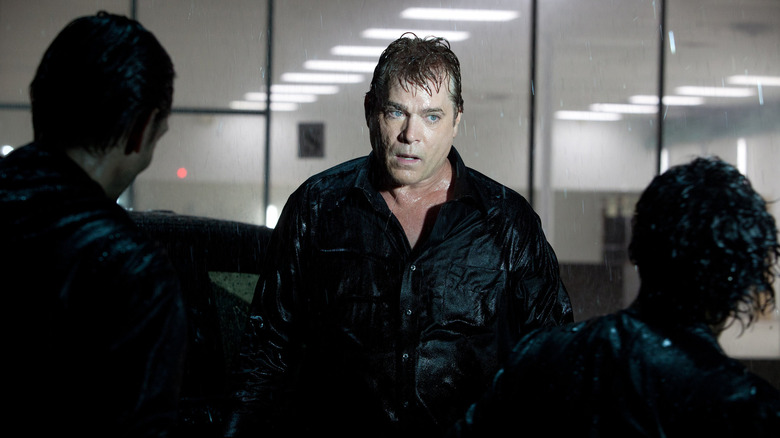
In "Killing Them Softly," mob boss Markie Trattman's (Ray Liotta) reputation comes back to haunt him. See, Trattman is known to have orchestrated a legendary inside job, which is why Johnny "Squirrel" Amato (Brad Pitt) decides to rob him. Amato figures that if he steals money from Trattman's own poker game, Trattman will be the most obvious suspect because of his past transgressions. This is more than good plotting. It's the thesis of the film writ large.
"Killing Them Softly" takes place during the American financial crisis, a moment when money was in the shortest supply the 21st century has seen yet, and what cash was available could be best described as "borrowed." It was a time so fraught that President Obama tried to unite the country by reminding it that "out of many, we are one." A clip of him saying so plays right before Amato offers his own description of the American Dream: "I'm living in America. And in America, you're on your own. America's not a country. It's a business."
Markie Trattman was in the crime business. America is in the country business. Both tried to trade on their reputations in order to get out of trouble. As history has shown, neither really did. This sobering truth, combined with sterling direction from Andrew Dominik, makes "Killing Them Softly" more than excellent. It's important. If you've never seen it, now's the time.
Cop Land
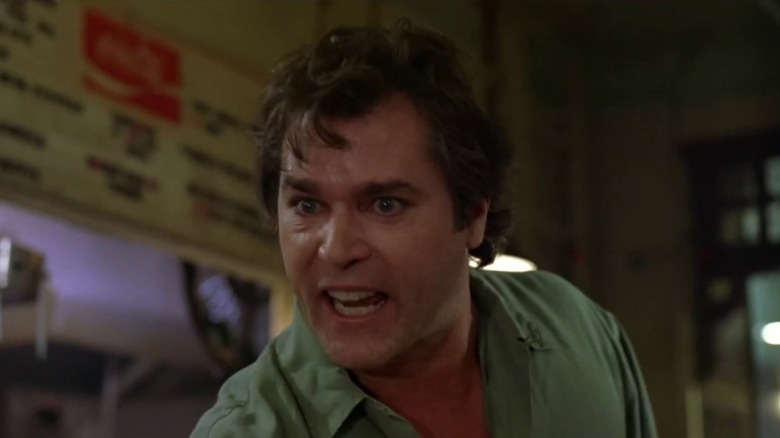
In "Cop Land," Ray Liotta shoves a dart up the nose of the T-1000 himself.
No, not the actual T-1000. And, yes, James Mangold's modern neo-noir masterpiece is much more than the sum of its ecstatic but gritty and violent parts. All the same, Ray Liotta takes Robert Patrick to town so hard that Harvey Keitel seems genuinely distressed by it. I mention all these actors by name because, at its core, "Cop Land" casts recognizable actors from every side of the action and crime film canon (Liotta, Robert De Niro, the previously mentioned Keitel, and Sylvester Stallone) to hammer its thesis home: There are two Americas, and police violence marks the dividing line.
That "Cop Land" was made in 1997 and is still fiercely resonant today should speak to its greatness. That it echoes "Chinatown" and "High Noon" before staging its iconic action finale should, too. But it's the fact that even the film's tiniest moments, like Liotta making memorable use of a dart, trended on social media as soon as Liotta passed that speaks to its greatness. There's not a single dull or unimportant gesture in "Cop Land." It is an empathetic and effective slice of crime movie nirvana.
Goodfellas
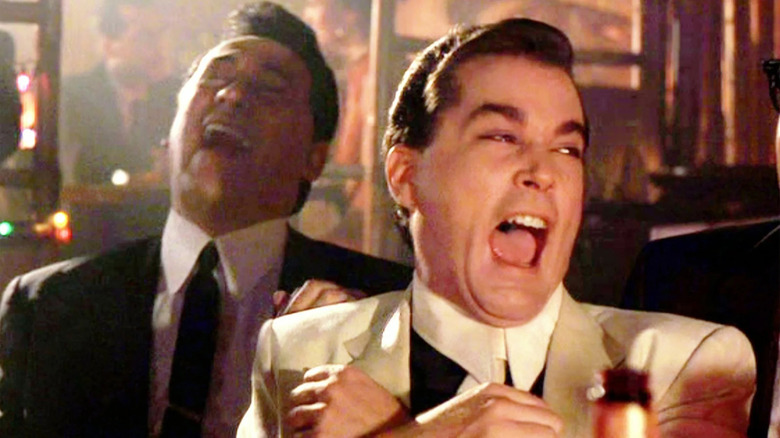
It's hard to imagine writing anything about Martin Scorsese's all-time masterpiece "Goodfellas" that others haven't already said, but here it goes.
The image of Ray Liotta laughing, seen above, is a meme now. You need only to peruse Twitter sparingly over the course of the day to find it in the replies of any given thread. It is second-generation pop iconography, a moment that was already a piece of classic cinema but is now used as conversational shorthand. For my money, that is proof that, more than any other mob movie short of "Scarface," "Goodfellas" connected pop stars with criminals. A cult of personality informs both. The wealth that each accrues is both an enticement to hustle and the stuff that capitalistic dreams are made of. "Goodfellas" has as much in common with "A Star Is Born" as it does "Donnie Brasco," from the sequences of Henry Hill's (Ray Liotta) dizzying rise to his drug-fueled, paranoia-rich breakdown.
"Goodfellas" is also the film that made Ray Liotta a star. There are many reasons to believe Liotta would have become a Hollywood institution without Scorsese's mob epic — just look at the rest of this list for proof — but it's impossible to imagine any other film serving as a North Star for the rest of Liotta's career. The world owes "Goodfellas" a debt in more ways than one. In light of Liotta's passing, giving it a first or repeat viewing feels absolutely necessary.
Read this next: The 12 Best Mob Movies You Need To See Immediately
The post The 14 Best Ray Liotta Movies, Ranked appeared first on /Film.
Nearly 100,000 NPM Users' Credentials Stolen in GitHub OAuth Breach
The Top 20 Disney Animated Villains Ranked
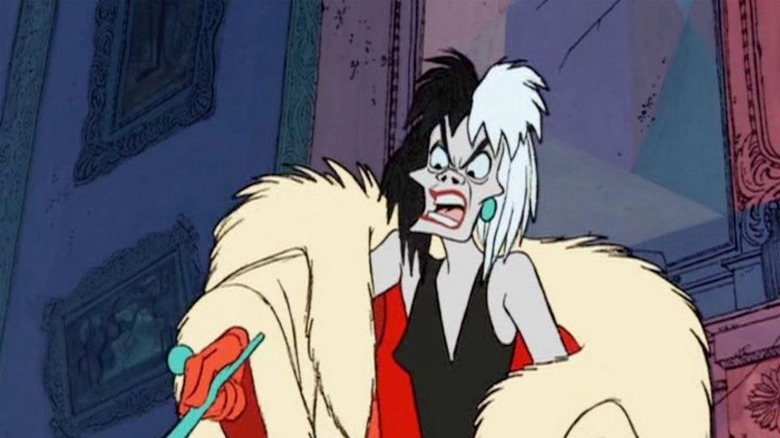
Heroes are nice and all, but there's an undeniable quality that makes villains fascinating. Often the outcasts of society, villains hunger for recognition and power, and typically, what separates them from the "good" people in society is what they're willing to do to get what they want. Some are just like us, and some are unrecognizably evil, but they're all equally intriguing. Throughout cinematic history, many iconic villains have graced our screens, showing us that it's just so good to be so bad.
Villains have been essential to animated stories for ages, but Disney villainy is its special brand. Disney villains are the characters we love to hate (or simply love to love). In over 60 Disney animated films, we've seen villains of all shapes and sizes, with wide ranges of motivations. While villains have taken the backseat in the last decade or so in Disney animation, they're still essential to many a classic Disney film. Which villains have truly stood the test of time? After going through every single Disney villain, here are the standouts — these are the top 20 Disney animated villains, ranked.
Prince John
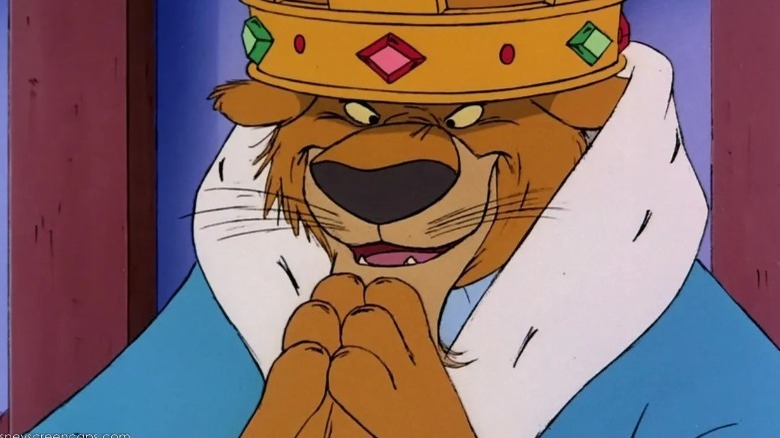
There's an old saying that there are only two things that are certain in life: death and taxes. That must be something that Prince John takes to heart, as nothing excites him quite like tax day. Some feel a thrill when it's their birthday or when they accomplish something special, but for Prince John, it's that unstoppable joy that comes with taking every last penny from his destitute citizens to line his own pockets. His adversary is Robin Hood, the sexy socialist fox whose crime is — helping the poor survive. Okay, so technically, he steals but only from the outrageously rich Prince John to ensure that people don't go hungry. Prince John is probably the least relatable villain around unless, of course, your butler is holding whatever device you're reading this on.
"Robin Hood" is a film that gleefully lampoons the wealthy, and it takes Prince John square in its sights. He's more of a whimpering buffoon than a bonafide baddie and is often seen sobbing and sucking his thumb — much to the dismay of his henchman Sir Hiss. He's a pretty one-dimensional character whose personality is given a considerable upgrade thanks to the voice work of Peter Ustinov. Ustinov intricately layers Prince John's insufferable whining with scathing malice that serves to remind audiences that he's very much in charge, even if he really shouldn't be. Prince John is viable proof that even the silliest, most incompetent villains are still capable of causing problems aplenty.
Governor Ratcliffe
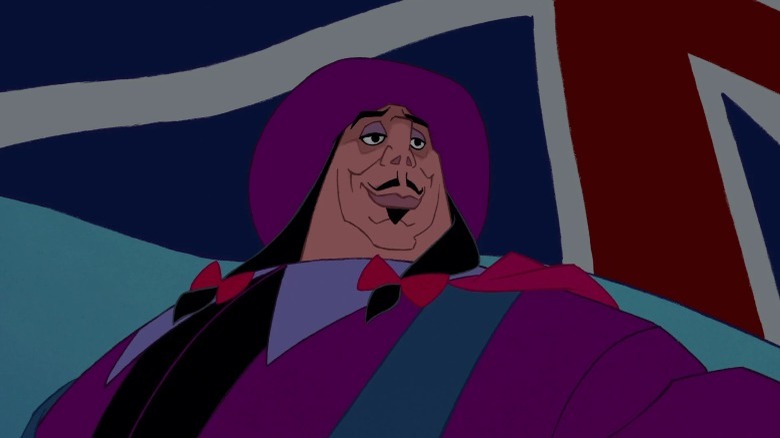
I'd be willing to bet that our next villain sees the world in much the same way as Prince John. Governor Ratcliffe is tasked with the arduous mission of traveling across the ocean to find gold. Like Prince John, he's deeply motivated by money. He's more complicated though, as he's also desperate for glory and recognition from his peers that mere gold simply cannot provide. Ratcliffe's desire to be recognized for his hard work is relatable. His rampant xenophobia is far less so. He takes a particular delight in referring to indigenous people as savages, and he'll happily slaughter them all and destroy their land to fill his coffers.
Throughout "Pocahontas," it becomes increasingly clear that Ratcliffe is downright despicable and will do absolutely whatever it takes to complete his mission. His hatred knows no bounds, and he regularly leads his men to do questionable things. Thankfully, greed winds up being Ratcliffe's downfall, and he ends up shooting his own soldier, which leads to him being deservedly jailed. Ratcliffe could be a lot higher on this list, as he's got a memorable design, a glorious purple outfit, and one of the most underappreciated songs in the terrific "Mine, Mine, Mine." Ratcliffe doesn't get quite enough camera time to rise in the ranks, but he's still a memorable addition to Disney's world of villainy.
Dr. Facilier
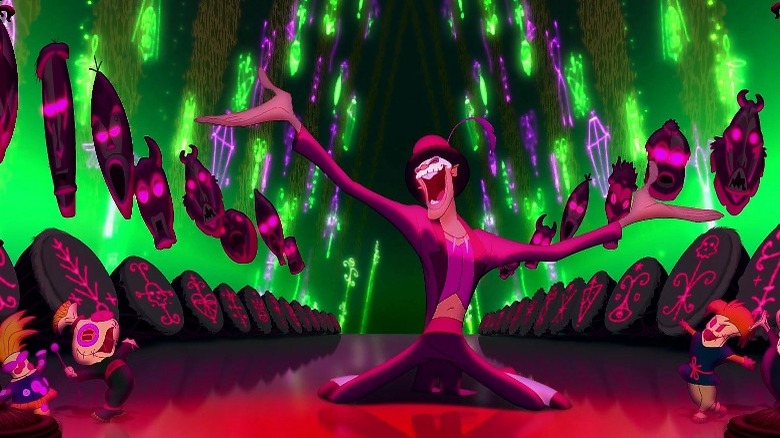
The color purple is an essential part of many a Disney villain's wardrobes. It's a color rooted in wealth, mystery, and royalty, which reflects the visions of many a Disney antagonist. Dr. Facilier (brilliantly voiced by Keith David) is a down on his luck witch doctor who has some serious resentment toward wealthy aristocrats. Always lurking in the shadows, Facilier concocts a plan to obtain wealth of his own, turning Prince Naveen (Bruno Campos) into a frog and working together with Naveen's assistant to finally take what they view as rightfully theirs.
Many great villains are given a musical number to let audiences in on what the villain's motivations are, and few are as show-stopping as Dr. Facilier's. The dazzling "Friends on the Other Side" is the perfect blend of the visually sublime and the genuinely frightening, and the animators have had a fantastic time, using just about every color imaginable to explore Facilier's unique powers. His control over shadows and darkness makes him a legitimate threat, and he even manages to kill a beloved character without hesitation. He gets close to his dreams of taking over the city of New Orleans and becoming all-powerful, only to be undone by his misunderstanding of a frog's anatomy. Unfortunately for him (and fortunately for the wonderful Tiana, voiced by Anika Noni Rose), his debts catch up to him, and he receives one of the most brutal downfalls as he's dragged by the shadows into the spirit world where he's doomed for all eternity.
Captain Hook
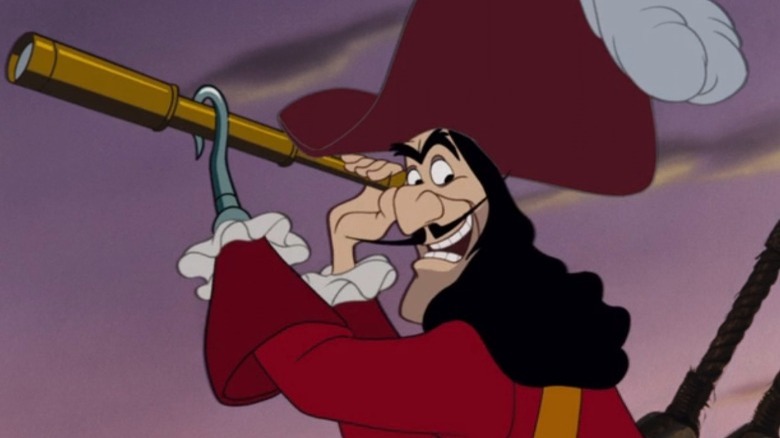
If you're someone regularly bothered by a pesky kid, then Captain Hook may feel especially relevant. Hook is first seen studying a map, trying to find Peter Pan and smoking an outrageous double cigar as he twirls his elegant pointy mustache. His motivation is straightforward: He wants the boy dead for cutting his hand off and feeding it to a crocodile, which, to be frank, is pretty justified. You almost feel bad for Hook, as he's relentlessly taunted by the very same crocodile, who is constantly in pursuit to consume the rest of him.
While there are plenty of threats in Disney movies, actual deaths are considerably rarer. Hook changes that almost instantly, nonchalantly shooting one of his crew for singing a song. In another moment, Hook throws a member of his crew overboard with his hook. So many villains promise violence and murder yet never end up delivering the goods, but Hook does it almost immediately and without a moment's hesitation. Despite this, he has a surprising emotional vulnerability and typically quakes with fear over the crocodile's pursuit. Don't let his good looks and fashionable outfit fool you. Hook is one of the most menacing villains in the Disney canon.
Chernabog
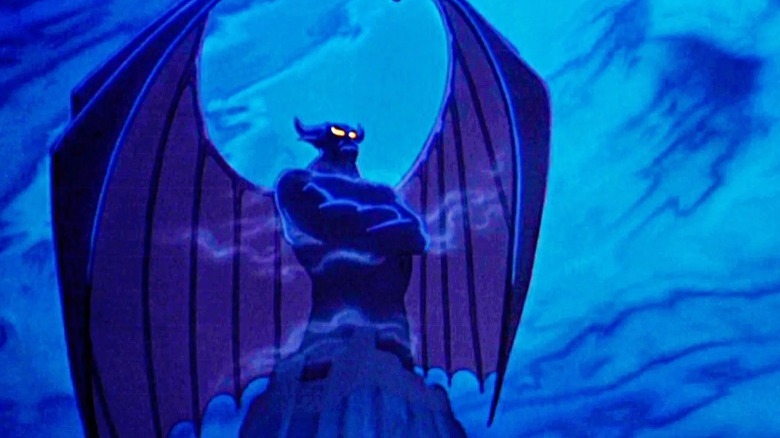
Many great Disney villains win the hearts of audiences with memorable songs or a devilish quip, but in Chernabog's case, he has nothing but sheer physical dominance to rely on. As the menacing big bad from the 1940 musical anthology, "Fantasia," Chernabog appears in the dizzying "Night on Bald Mountain" sequence and doesn't say a word, though his actions are made highly memorable thanks to great design and the beautiful musical accompaniment of Modest Mussorgsky's masterwork.
His power is immense. With the mere wave of his hand, he's able to summon the spirits of the dead to do his bidding. His size is every bit as awe-inspiring, and in terms of sheer scale, he's undoubtedly the biggest villain. Not even Monstro the whale can compete with Chernabog, who's quite literally the size of a mountain. Chernabog was animated by Bill Tytla, a titan of Disney's first films, and Tytla makes Chernabog unforgettable, striking a perfect balance of looking like he's carved into a mountain and therefore largely immobile but giving the illusion that he could break out at any moment to destroy the world.
It's surprising (and a bit disappointing) that such a menacing monstrosity is so easily defeated by something as measly as a church bell, but perhaps that speaks more to my desire to see Chernabog wreak absolute havoc! Despite an appearance so small in Disney animation's longest movie that it may as well amount to a cameo, an incredible design matched with incredible power has allowed Chernabog to remain one of Disney's greatest villains.
Gaston
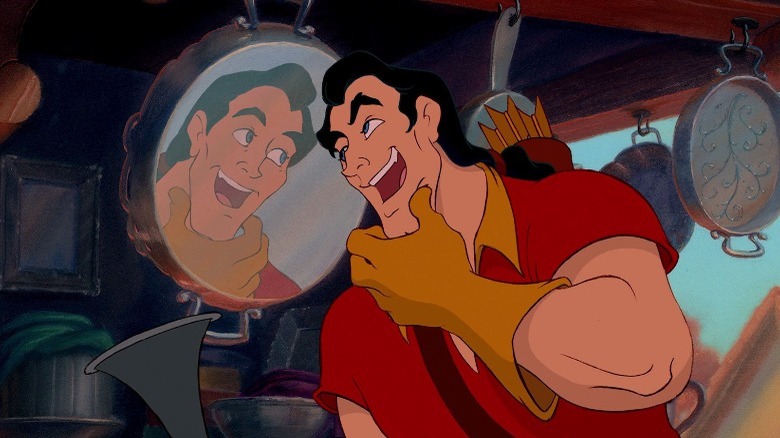
While it disturbs us all to see Gaston (Richard White) looking so down in the dumps, rest assured, nobody is more upset about it than Gaston himself. Without a doubt, the vainest man in the Disney canon (only to be outdone by one particularly vicious lady further down the list), Gaston is all about appearances. While many villains dream of power, revenge, violence, or generally loftier ambitions, Gaston is driven by his romantic desires. "Beauty and the Beast's" opening song, "Belle," establishes that Gaston is adored by every woman in town except Belle, who has no interest in him whatsoever. Despite a firm rejection, Gaston is determined to marry her. I'd say "win her heart" here, but I don't think Gaston has any genuine interest in Belle and just wants to prove that every woman in town does indeed desire him.
It may be surprising that Disney's most muscly man is so low in these rankings, and while Gaston is spectacularly obnoxious and a delightful character you love to hate, is he really all that villainous? He's certainly a scumbag and has some nasty qualities, but going toe to toe with the other villains on this list, he really does pale in comparison. His motivations and abilities aren't quite up to par. Heck, there's a lot of mileage in the argument that the Beast (Robby Benson) is actually more of a villain than Gaston. He does, after all, imprison Belle for wanting to save her father's life. That's not even something Gaston is capable of.
The Coachman
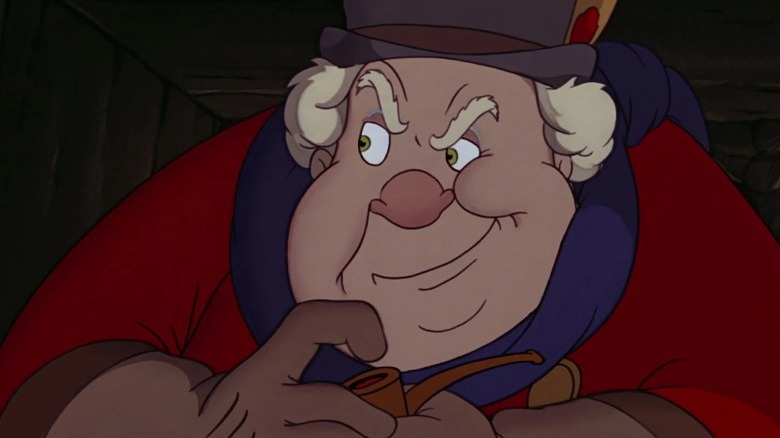
Despite nearly 60 films being released since "Pinocchio" came out in 1940, it remains one of the studio's darkest movies. Part of the reason why is that "Pinocchio" doesn't just have one villain — it has five. While they range widely in terms of downright nastiness, the most sinister of them all is the Coachman. He's physically imposing, and it's clear that when he's speaking to fellow villains Honest John and Gideon that he's willing to go a great deal further than them for a payday. When the Coachman tells them he's taking Pinocchio and some other boys to Pleasure Island, they're terrified, but the Coachman is thrilled, and the camera closes in his devilish grin, making for one of the most frightening shots in film history. The coachman takes immense pleasure in doing his work, gleefully watching as boys are turned into donkeys that he sells to work as laborers.
One of the most terrifying things about the Coachman is that he suffers no consequences. Many villains wind up behind bars or fall to their fiery doom, but the Coachman doesn't even get a slap on the wrist. Just thinking that he's out there taking more kids to Pleasure Island and getting richer from it is enough to make your skin crawl. The Coachman is a crushing reminder that evil lurks among us unchecked and that justice isn't always served.
Shere Khan
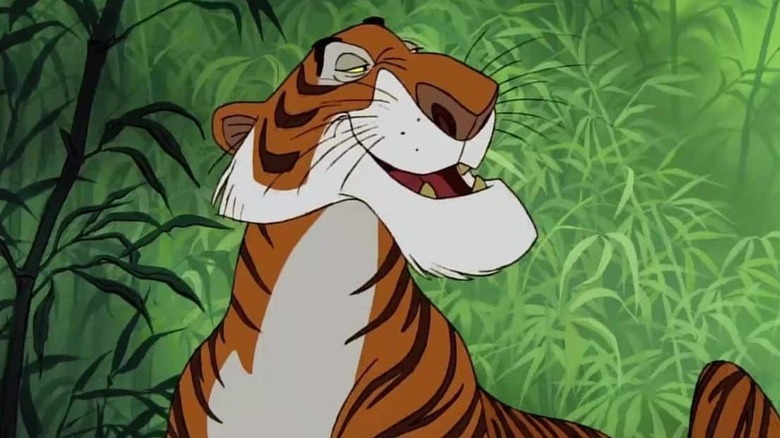
"The Jungle Book's" Shere Khan (voiced by George Sanders) is the notorious tiger who has a well-worn reputation for being downright vicious and a ruthless killer. Though he's regularly referenced as the main reason the animals need to get Mowgli (Bruce Reitherman) out of the jungle, as Shere Khan has sworn to kill any human that enters their domain, he's not seen until the second half of the film. Despite his limited presence, he makes the most of his brief screen time. His showdown with Mowgli showcases what a formidable foe he is, even if he succumbs to his intense fear of fire.
Oscar-winner George Sanders does a brilliant job voicing Shere Khan, embuing the vicious tiger with a resplendent charm that makes you covet a meal with him in which he gleefully dishes the jungle's spiciest gossip. It's that impressive duality that Shere Khan possesses that makes him an utter delight, even while he's trying to destroy our beloved protagonist. Shere Khan is an early example proving that villains can be a lot more than just evil. They can be really fun, too.
Mother Gothel
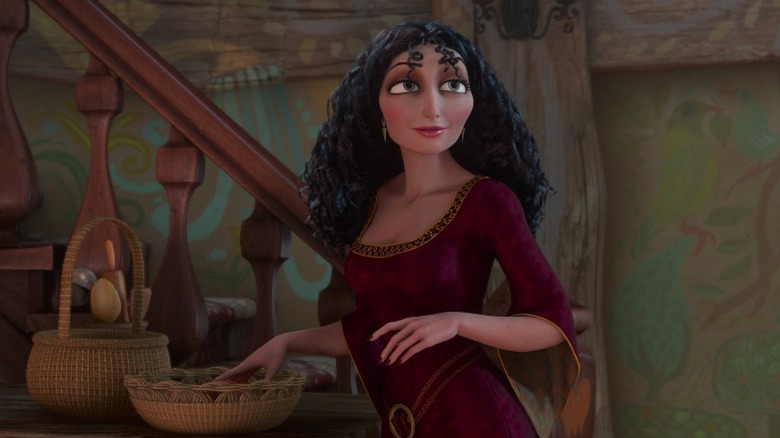
A spiritual successor to the gloriously vain Gaston, "Tangled's" Mother Gothel (Donna Murphy) is completely obsessed with youth. In a desperate bid to stay young, Gothel kidnaps Rapunzel (Mandy Moore) to make use of her magical hair that restores youth. In her defense, she used to use a magical flower, but the king's soldiers took it to save the Queen's life. A desperate Gothel kidnapped Rapunzel (who inherited the power) to keep herself young, and more importantly, alive.
Gothel's terrifically catchy song, "Mother Knows Best," provides a masterclass in manipulation and passive-aggressiveness, listing all the ways Rapunzel couldn't possibly survive on her own for even a second outside the tower, all while telling Rapunzel how much she cares about her. This is further underlined in the song's reprise, which sees Gothel deliver a nasty tirade against Rapunzel that allows our heroine to finally begin to see just how cruel and manipulative her captor-mother can be. While Gothel shares many similarities with Gaston, what she does is considerably crueler: kidnapping a child and imprisoning them while convincing them that they're your daughter is pretty sick and twisted. Gothel represents a terrifying sort of evil that's all too real. She doesn't use any sort of magical powers to enslave Rapunzel, just words. And words can be the deadliest weapons of all.
Hades
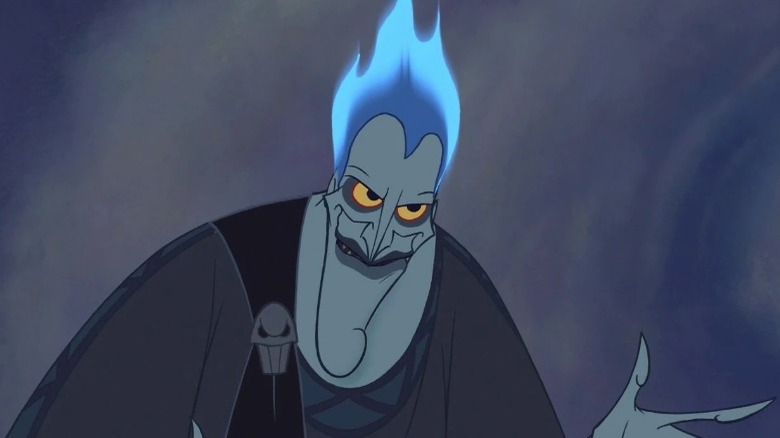
Everyone's favorite fast-talking, fiery-haired god of the underworld, Hades (James Woods) is easily one of the most downright delightful villains, cracking jokes the moment he first appears on-screen in "Hercules." As the muses so beautifully, Hades is as mean as he is ruthless and thinks of himself far too highly to run something as dull and uninspiring as the underworld. As many great villains do, Hades has spent many years developing a complex scheme to lead an uprising on Mount Olympus to steal power from Zeus. All is going to plan until the fates reveal that Zeus' child, Hercules, will undo Hades' master plan. In a move that would make Mother Gothel proud, he kidnaps Hercules and turns him mortal. However, Hercules would retain his immense physical power.
Of course, Hades is unsuccessful in his quest to take over the world, but it's incredibly satisfying to watch him try. His ability to manipulate and his charisma are overwhelming, and he gets close to succeeding. If only there wasn't that meddling Hercules! James Woods injects Hades with extraordinary life, transforming what could have been a straightforward nasty villain into a complex and very funny icon. Woods provided an impressive amount of ad-libbing, which had the animators working hard to keep up with his ultra-quick delivery. His sudden shift from smooth-talking to completely enraged help make him one of the most well-rounded and unforgettable of all Disney villains.
Jafar
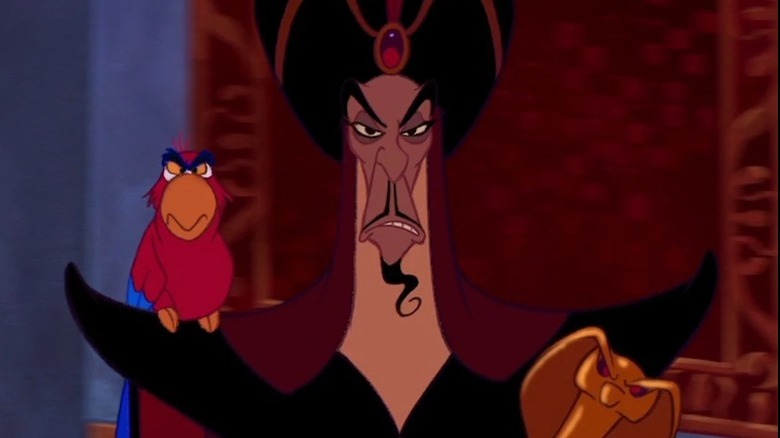
You've got to feel for Jafar (Jonathan Freeman) in "Aladdin." As Grand Vizier of Agrabah, he does all of the work and gets none of the credit. He's the Sultan's (Douglas Seale) trusted advisor, but it's clear that Jafar is far more responsible and better at his job than the sweet yet incompetent Sultan. It's no wonder he's hatching a plan to take over Agrabah to finally get the respect he feels he so richly deserves. Jafar has spent much of his life searching for a magic lamp that can finally give him the power he needs to accomplish his wildest dreams.
Legendary animator Andreas Deja did a fantastic job creating Jafar, giving the menacing Grand Vizier a slender and almost unassuming design. Jafar doesn't look inherently evil, and if anything, he looks like an eccentric family member you may run into at a reunion. He even has an adorable parrot on his shoulder (the fantastic Gilbert Gottfried) to keep things fun! Still, Jafar is more than a quirky uncle type, and his appearance makes his inherent evil all the more surprising and effective. He even gets some fun transformations, turning himself into a beggar, a massive cobra, and ultimately, an all-powerful genie, which proves to be his swift undoing. He's a character so adored that he was the star of Disney's first-ever straight-to-video sequel, "The Return of Jafar," a genuinely bad film that ended up making the studio an awful lot of money.
Scar
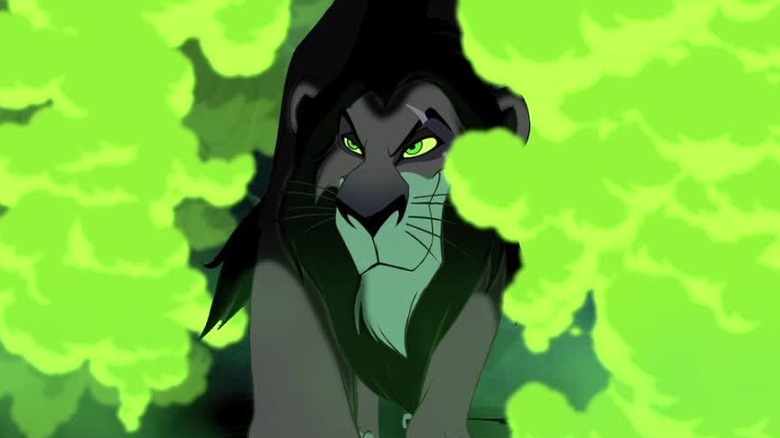
Few villains are beloved as Scar (Jeremy Irons), the menacing lion desperate for power in "The Lion King." There's a clear inspiration from Shere Khan on display, as Jeremy Irons infuses Scar's menacing behavior with a charming sophistication, gleefully manipulating a young Simba (Matthew Broderick) into believing he's responsible for his father's death. Scar's charisma and ability to rouse a crowd make him terrifying. His stand-out musical number, "Be Prepared," has visual cues that harken back to the Nazi propaganda film, "The Triumph of the Will." Making a comparison to one of the world's most notorious monsters is no small statement, but the Nazi comparisons speak to the terrifying way that a person can convince an army with sheer will.
Many villains get so close to success that they can practically taste it, but Scar manages the seemingly impossible feat of actually accomplishing his goal. Scar wants nothing more than the be the lion king, and he does it! Scar is so threatening because we actually see his dream made a reality, and the results are terrifying. Under Scar, everyone in the Pride Lands is on the verge of starvation, and the land that once thrived under Mufasa is now little more than a graveyard. That's a huge part of the reason watching the debonair lion's downfall is so satisfying. Scar must be eliminated for the Pride Lands to return to their former glory.
Cruella De Vil
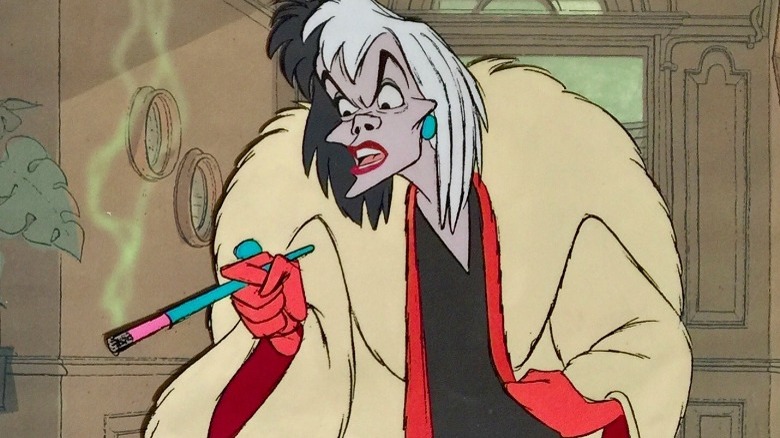
Isn't there something just tantalizing about a group of puppies that makes you want to turn them into the latest fashions? No? Well, me neither, but then again, we aren't the iconic Cruella de Vil. She's voiced by the fantastic Betty Lou Gerson, an impressively diverse actress who also gave life to the gentle narrator in "Cinderella." In the 1961 classic, "One Hundred and One Dalmatians," not much is known about de Vil, but her reputation precedes her, and she's talked about (and thankfully, sung about) long before her wafting green smoke cloud and enormous fur coat appear. She has one of the hardest motivations to justify. How exactly can one defend her mission to kidnap over 100 dalmatian puppies for the sole purpose of turning them into a fabulous outfit? Marc Davis, one of the all-time greatest animators, was responsible for turning her into an unforgettable character, and he succeeded, taking inspiration from Gerson's performance to design a truly legendary character.
Cruella is undoubtedly one of the most popular villains in the Disney canon. She was played wonderfully by Glenn Close in the live-action remake "101 Dalmatians" and its sequel, "102 Dalmatians." She also recently got her own movie with the live-action "Cruella" in which Emma Stone did her best to make a dreadful movie somewhat watchable. Still, the definitive version of Cruella de Vil is the manic, unhinged fashion icon that first graced our screens in 1961.
Lady Tremaine
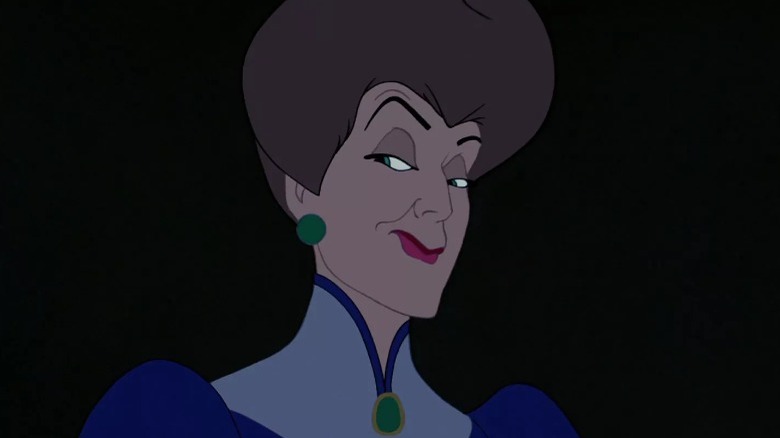
Oftentimes, a character's first moment on screen can tell us a lot about the kind of person they are. In the 1950's masterpiece, "Cinderella," Lady Tremaine (Eleanor Audley) has a highly memorable entrance that tells the audience just how frightening she is. While she makes an appearance in the film's opening narration, her first proper appearance comes a bit later. Cinderella is doing her daily chores, which amount more to forced labor as she polishes and cleans every inch of their enormous home in addition to doing the laundry, cooking, and anything else you could fathom.
We hear her first: a sharp cry calling out for Cinderella. As Cinderella walks into the grand, shadow-cloaked bedroom, we see the sinister green eyes of Lady Tremaine (and the glistening eyes of her cat, Lucifer) piercing through the shadows. The image of Lady Tremaine sitting in bed and stroking her cat while aggressively silencing Cinderella and demanding she does even more work is bone-chilling. Audley's voice work is outstanding as she delicately lists Cinderella's chores before violently barking her demands.
As with the Coachman in "Pinocchio," Lady Tremaine never faces any consequences. The worst thing that happens to her is that she loses her maid, which hardly feels like a fitting punishment for someone who has taken such joy in torturing an innocent young woman for years. What's fascinating about Lady Tremaine is that despite the illusion of wealth, she's barely holding her house together. Getting her daughters to the ball is a desperate, last-ditch effort to keep the family prosperous. It's the illusion of wealth and class that allows Lady Tremaine to get off scot-free.
Professor Ratigan
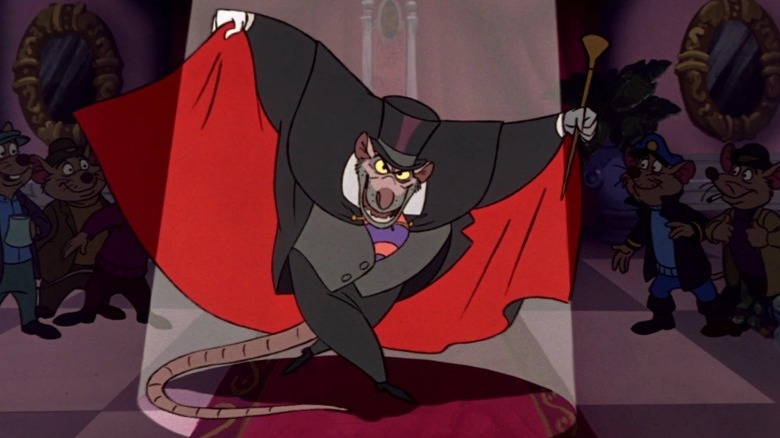
The world's greatest criminal mind is also Disney's most underappreciated villain. Voiced by one of horror's most influential actors, Vincent Price, Professor Ratigan is a big part of why "The Great Mouse Detective" turned the tide for Disney in the mid-'80s and deserves to be considered the real start of the Disney Renaissance. Don't let his debonair appearance fool you. Underneath his dapper top hat and elegant black tuxedo is a legitimately sinister rat. Ratigan schemes to take over the city of London by replacing the Mouse Queen with a robot, which is a flawless plan that couldn't possibly go awry in mere moments. Considering that his band of thugs proclaim him to be "the world's greatest criminal mind" in a glorious musical number, it's rather surprising his scheme is so shoddy. Despite a questionable plan, he's got what it takes to make it happen, including a veritable swarm of henchmen like the one-legged bat Fidget and his pet cat Felicia, who takes great pleasure in eating Ratigan's enemies.
Ratigan comes incredibly close to taking out his arch-nemesis, Basil, and if not for a miraculous last-second stroke of luck, Ratigan would have defeated his pesky rival once and for all. Price is having the time of his life playing the evil rat, delivering every line with a sparkling gusto. Ratigan is often elegant and well-spoken, but when he gets angry, he becomes practically feral, revealing a complicated side of a fascinating villain.
Maleficent
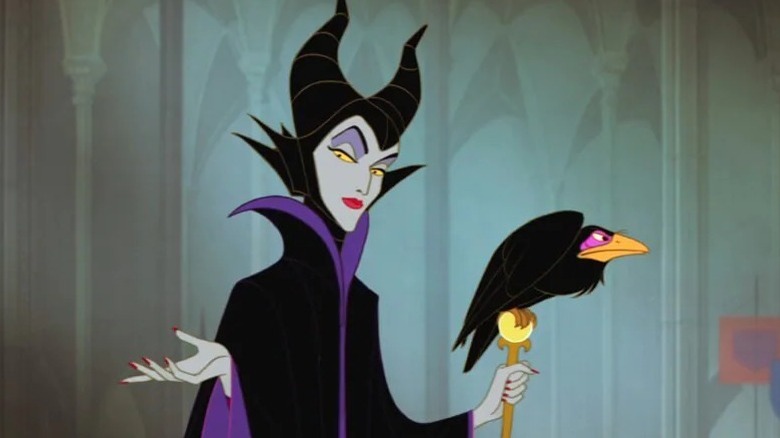
Villains encompass many things, but when it comes to Disney, they're often scheming for either wealth or power. They can be vain, vengeful, and even lustful, but until Maleficent (Eleanor Audley), they were never petty. In Disney's most visually unique film (thanks to the fantastic Eyvind Earle), the sorceress Maleficent places a curse on a baby princess because she wasn't invited to her christening. The poster child for pettiness dons a magnificent black and purple cloak. Her fantastic design by Marc Davis, including large horns and pale green skin, has allowed Maleficent to be instantly recognizable. The all-powerful sorceress is responsible for some truly stunning magic. She also engineers Disney's most spellbinding sequence, which finds a hypnotized Princess Aurora (Mary Costa) wandering through a castle to find a lone spinning wheel, pricking her finger to ensure her endless sleep. The only reason Maleficent doesn't succeed is timing. If she had just waited until after Merryweather (Barbara Luddy) bestowed a blessing upon Aurora to crash the party, she would have been victorious.
While many villains' fates are presumed rather than made explicit, Maleficent receives one of the more obvious demises. In the epic face-off between Maleficent (freshly transformed into a menacing dragon) and Phillip, the prince drives a sword through her heart. Maleficent screams as a pool of blood forms (an anomaly for Disney) and collapses. The film even goes so far as to confirm the character's death, showing the sword plunged into her cloak. Despite her brutal ending, Maleficent stands as a powerful reminder to double-check your invitation list.
Yzma
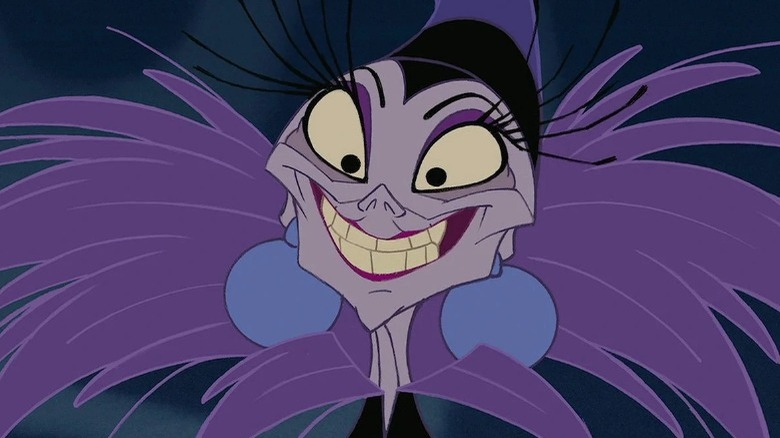
It's hard to believe that a film as wondrous as "The Emperor's New Groove" might never have existed. It is different than every other Disney film, embracing a madcap, relentless go-for-broke energy. It's no wonder that the film's antagonist matches that energy. Voiced with extraordinary panache by Eartha Kitt, Yzma is a comic delight and a genuinely thrilling villain. Yzma serves as the advisor to Emperor Kuzco (David Spade). She longs to run things on her own, and just like Jafar, Yzma is frustrated by Kuzco's incompetence and lackadaisical attitude. As evidenced by her extraordinarily complicated secret lab, Yzma is incredibly intelligent.
Yzma is such a titanic delight because she lampoons everything that makes a villain. This is best highlighted by her ridiculously over-complicated initial scheme to eliminate Kuzco, which involves turning him into a flea, putting him into a series of boxes, and mailing him to herself. Kitt's voice work is positively electric, fleshing out Yzma with otherworldly manic energy. Kitt delicately layers every word with a gloriously seductive quality. There are villains out there that are far nastier than her, but when it comes to sheer entertainment value, few stand a chance against the force of nature that is Yzma.
Evil Queen
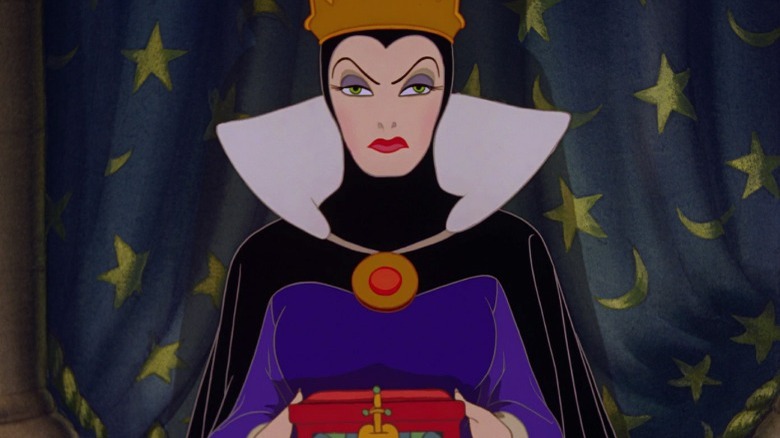
The idea of a villain rooted in vanity was at the inception of Walt Disney's initial foray into feature-length animation, as the very first villain in the Disney canon is all about the importance of appearances. In "Snow White and the Seven Dwarfs," the Evil Queen (Lucille La Verne) has just one desire: to be the most beautiful in all the land. When her magic mirror reveals that she is no longer the most stunning lady in the world, the Queen is horrified. Most people would likely just accept the news and move on, but she's not like everyone else. Instead, the Queen makes it her mission to kill Snow White (Adriana Caselotti).
There's a lot we don't know about the Queen, and that's a big part of what makes her so terrifying. When she goes down into the castle dungeon to transform into an old woman to trick Snow White, we see various skeletons. Who were they? What are they doing there? Are they the bones of those who happened to be prettier than the Queen? These are questions that are never answered, but the casual placement of skeletons speaks volumes about the Queen's malice. Disney hit it out of the park the very first time, creating an unforgettable villain whose equally terrifying as an elegant Queen in a divine purple gown and as a haggard crone in a black cloak.
Ursula
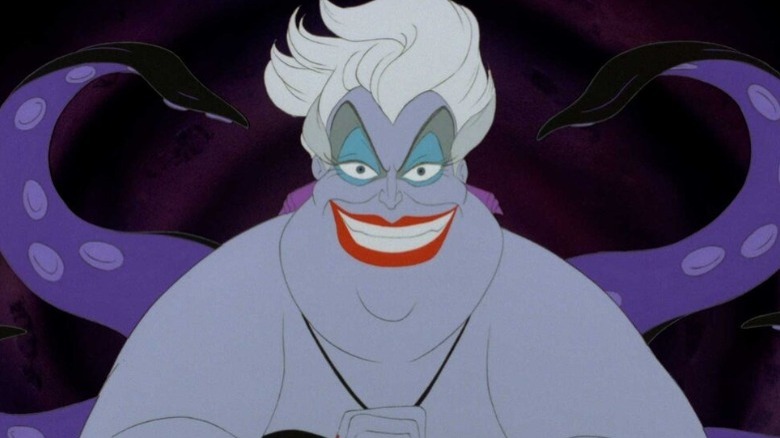
Disney went big and bold with 1989's "The Little Mermaid," ushering in a new kind of Disney film that's filled to the brim with extravagant Broadway-style musical numbers. With the incredible duo of Alan Menken and Howard Ashman behind the music, the songs in the film were bound to be unforgettable. From "Under the Sea" and "Kiss the Girl" to "Part of Your World," the film may have the strongest soundtrack of any Disney film. That is all but confirmed by the phenomenal "Poor Unfortunate Souls," sung by the sinister sea witch, Ursula (Pat Carrol).
We've talked about how many villains wear purple to signify their desire for power, but Ursula doesn't just wear purple. She is purple. Her desire to take over King Triton's (Kenneth Mars) reign in Atlantica is so powerful that it's practically taken over her body. Ursula covets Triton's throne, and she's more than willing to take advantage of Ariel (Jodi Benson), who longs to leave the ocean behind. In "Poor Unfortunate Souls," she offers Ariel the chance of a lifetime, using her immense magical powers to transform the naive mermaid into a human. However, the transaction costs Arial her voice.
Ursula is delightfully evil. She's voluptuous, campy, ridiculous, and frightening. In many ways, she seems like a glamorous drag queen, which makes a lot of sense when you realize her wonderful design was inspired by the one and only Divine.
Judge Frollo
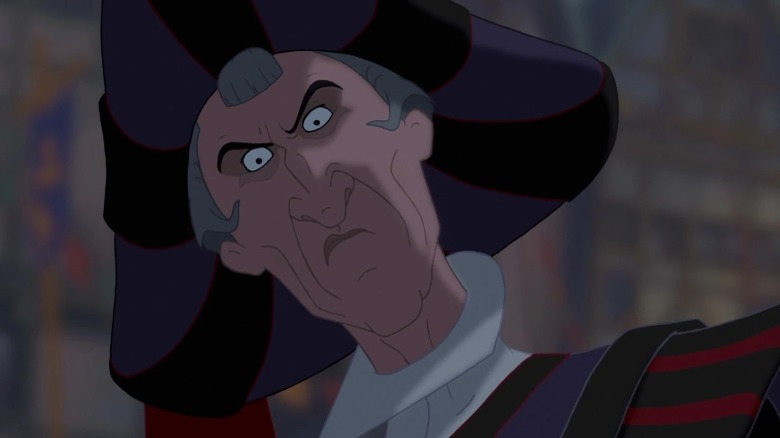
Judge Claude Frollo (Tony Jay) already has the tremendous power and status that most villains dream of, so what is it that he's really after? Frollo is the most complicated villain in the Disney canon, but much of his rage can be pinned down to his complicated sexual desires conflicting with his unflinching faith. Despite being a supposed man of the cloth, he treats people appallingly. He keeps Quasimodo in the bell tower of Notre Dame, constantly reminding him that he's hideous and that nobody else would ever dream of caring for him. Thanks to the fantastic work of animator Kathy Zielinski, Frollo's physical appearance perfectly matches his sinister actions.
Of all the villain's musical numbers, "Hellfire" stands as the most impactful, revealing the complicated layers of Frollo's fractured psyche. In Disney's darkest song, Frollo sings of his righteousness before launching into his powerful sexual desire for Esmeralda (Demi Moore) that he cannot act upon — not only because Esmeralda finds him downright despicable. Frollo is torn between his lust and his faith, which is something Disney has never dealt with before. There were hints of lust with villains like Jafar, but here, it's made explicit, as Frollo lays his feelings bare. This sequence is full of powerful religious imagery. Enormous figures shrouded in red cloaks tower over Frollo as he begs to be freed from his carnal passions. Disney has never reckoned with a villain as dark and twisted as Judge Frollo, and I'm willing to bet they never will again. When it comes to being sinister, nasty, and unforgiving, nobody holds a candle to the one and only Frollo.
Read this next: All 58 Walt Disney Animation Studios Films Ranked From Worst To Best [Part One]
The post The Top 20 Disney Animated Villains Ranked appeared first on /Film.
The best Memorial Day tech sales we could find
Memorial Day is nearly here and, as usual, you can find a number of solid gadget deals across the web ahead of the holiday. A few Apple devices are on sale, including the latest AirPods for $150, and you can pick up a bunch of outdoor gear from the likes of Solo Stove, Ooni and BioLite for less. HyperX gaming accessories have been discounted as well, plus you can still pick up Amazon's Fire TV Cube for only $70. Here are the best tech sales we could find for Memorial Day 2022.
Apple AirPods (3rd gen)
The latest AirPods are $30 off and down to $150, which is only $10 more than their all-time-low price. We gave the buds a score of 88 for their improved audio quality, more comfortable design and longer battery life.
Buy AirPods at Amazon - $150Apple Watch Series 7
Both the 41mm and 45mm versions of the Apple Watch Series 7 are $70 off right now and down to record lows: $329 and $359, respectively. We gave the wearable a score of 90 for its larger display, faster charging capabilities and powerful watchOS 8 features.
Buy Series 7 (41mm) at Amazon - $329Buy Series 7 (45mm) at Amazon - $359Apple AirTags

A pack of four AirTags is down to $89 right now, or $10 off its regular price. If you have a few things you want to keep track of, this is a good opportunity to pick up a few AirTags that can help you do so. AirTags show you the location of your things in Apple's Find My app, and if you have an iPhone that supports Precision Finding, it can lead you directly to your stuff.
Buy AirTags (4 pack) at Amazon - $89MacBook Air M1
Apple's MacBook Air M1 is $100 off right now and down to $900. While not an all-time low, it's a good discount on Apple's thinnest and lightest laptop. We gave it a score of 94 for its speedy performance, excellent battery life and lack of fan noise.
Buy MacBook Air M1 at Amazon - $900Solo Stove

Solo Stove's Memorial Day sale knocks up to 46 percent off fire pits, so you can pick one up for as low as $200. You'll find the deepest discount on the big Yukon, which is $350 off and down to $400. We like these fire pits because they create much less smoke than their cheaper competitors and, out of the three models available, two of them are pretty portable, too.
Buy Yukon at Solo Stove - $400Buy Bonfire at Solo Stove - $220Buy Ranger at Solo Stove - $200Samsung Smart Monitor M8
Samsung knocked $100 off its new Smart Monitor M8. The display combines a smart TV and a computer monitor into one, but it also has a SmartThings hub built in, so you can use it to control your smart home ecosystem. The UHD display supports HDR 10+, refresh rates up to 60Hz and it has built-in access to streaming services like Netflix and Disney+.
Buy Smart Monitor M8 at Samsung - $600Sony Days of Play sale
Sony's Days of Play sale on Amazon discounts a bunch of PlayStation accessories, including all six PS DualSense controllers. You can pick up any of them, including the vibrantly colored ones, for $59, which is up to 21 percent off their normal prices.
Shop Sony Days of Play sale at AmazonGoogle Nest Audio
Adorama has a sale on Nest Audio smart speakers that bundles two of the gadgets for $120. That brings the price of each down to $60, which is $40 off their usual rate. If you only want one speaker, you can pick it up for $65. The Nest Audio is one of our favorite smart speakers thanks to its solid audio quality, minimalist design and stereo sound capabilities when you pair two of them together. Adorama also has the Nest Hub smart display for $65 and the Nest Hub Max for $179.
Buy Nest Audio (2 pack) at Adorama - $120Buy Nest Audio at Adorama - $65Buy Google Nest Hub at Adorama - $65Buy Google Nest Hub Max at Adorama - $179Roku Streambar
Roku's compact Streambar is back down to $99, which is $30 off its normal price. We gave it a score of 86 for its solid audio quality, Dolby Audio support and built-in 4K streaming technology.
Buy Roku Streambar at Amazon - $99Tile Essentials pack
The Tile Essentials four-pack of Bluetooth trackers is 15 percent off and down to $68. These small devices let you keep track of your things via the companion mobile app. You can see the last known location of your items in the app, and if you're within Bluetooth range, you can force the Tile tracker to ring so you can more easily find your stuff.
Buy Tile Essentials bundle at Amazon - $68Fire TV Cube
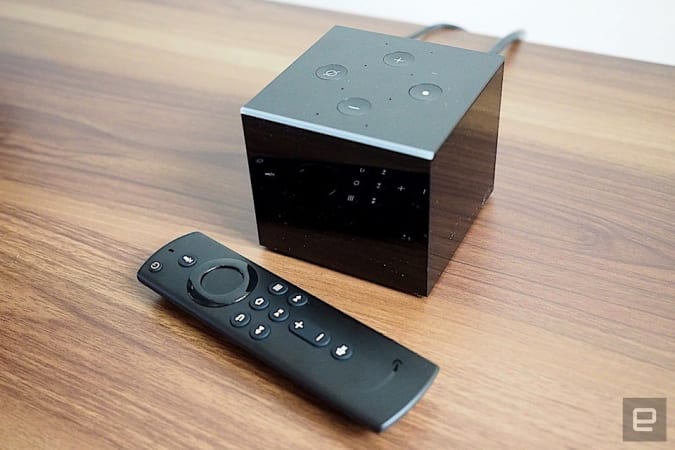
Amazon's Fire TV Cube is down to a record low of $70 right now, or almost half off its regular rate. This is the most powerful streaming device that Amazon offers and it supports 4K HDR content, Dolby Vision and hands-free Alexa commands.
Buy Fire TV Cube at Amazon - $70Fire TV Stick 4K

The Fire TV Stick 4K is 30 percent off and down to $35, which, while not a record low, it's a good sale price on this handy streaming stick. Like the Fire TV Cube, it supports 4K streaming and Dolby Vision, but it takes up much less space and can hide behind your TV. And if you want to spend even less, you can pick up the Fire TV Stick Lite for only $20.
Buy Fire TV Stick 4K at Amazon - $35Buy Fire TV Stick Lite at Amazon - $201Password

1Password is offering 50 percent off paid plans for a limited time, which means you can sign up for a personal plan for $1.50 per month (when billed annually) or a Families plan for $2.50 per month. 1Password is one of our favorite password managers because it stores all of the dozens of login credentials you have safely and securely, while also making it easy for you to fill in the correct ones without remembering them as you browse the web.
Subscribe to 1Password starting at $1.50/monthOoni pizza ovens
Ooni has knocked 20 percent off its pizza ovens, so you can pick one up for as low as $280. We've recommended Ooni pizza ovens in a few outdoor guides, and the new Karu 16 earned a spot on our list of favorite grilling gear thanks to its support for multiple fuel sources, a built-in digital thermometer for keeping track of temperatures and a hinged door with a glass window that lets you see what you're cooking more easily.
Shop Ooni pizza ovensSamsung Memorial Day sale
You can pick up smartphones, earbuds and laptops for less during Samsung's Memorial Day sale. If you've had your eye on the Galaxy Z Fold 3 5G, you can get one with a free Galaxy Watch 4 this weekend. Plus, the new Galaxy Z Flip 3 Bespoke Edition is $50 off and the company also knocked up to $150 off the Galaxy Chromebook 2.
Shop Samsung Memorial Day saleDell summer sale

Dell's latest sale discounts a number of laptops, headsets, monitors and more. Key among the deals is one on the Dell XPS 13 Touch laptop — you can grab the model with an 11th-gen Core i3 processor, 8GB of RAM, 256GB of storage and a 4K touchscreen for only $882.
Shop Dell summer saleHyperX Memorial Day deals
A number of HyperX gaming equipment is on sale across the web at Amazon, GameStop and other retailers. A standout is the QuadCast S microphone, which you can pick up for $120 right now. Compatible with macOS, Windows, PS4 and PS5, this mic supports four selectable polar patterns and customizable RGB lighting.
Shop HyperX deals at AmazonShop HyperX deals at GameStopBioLite Memorial Day sale
BioLite's Memorial Day sale knocks up to 25 percent off its camping and outdoor gear. We've recommended its headlamps in guides in the past, thanks to their slim profiles, adjustable light settings and general versatility. If you go for the Headlamp 330 or the Headlamp 750, you'll get a rechargeable battery, too.
Shop BioLite Memorial Day saleSea to Summit Memorial Day sale
Another one of our favorite outdoor brands, Sea to Summit, has also knocked 25 percent off many of its products for Memorial Day. We particularly like the brand's line of collapsible bowls and mugs for their reliability and portability. This sale knocks the X-Mug down to just over $10 and the X-Bowl to only $13.
Shop Sea to Summit Memorial Day salePlex Pass
Plex is offering 20 percent off a Lifetime Plex Pass this week only, bringing the cost down to $96. If you're unfamiliar, Plex allows you to create a server on which you can store your personal media, including TV shows, movies and music, and then access that content from anywhere. With a premium plan, you'll get access to features like skipping intros and trailers, HDR tone mapping, real-time server stats and more.
Buy Plex Pass (Lifetime) - $96Hisense TVs
A number of Hisense smart TVs have been discounted for Memorial Day. A standout is the 2022 65-inch A6 Series smart TV, which is $350 off and down to $450. You're getting a 4K TV with built-in Chromecast technology, Dolby Vision support and Sport and Game modes.
Shop Hisense TVs at AmazonSpark Grills
Spark Grills are $200 off for Memorial Day, so you can pick one up for as low as $900. These retro-looking grills heat one piece of charcoal to between 250 and 900 degrees, and you can keep track of cooking temperatures from the companion mobile app as long as you're within Bluetooth range.
Shop Spark Grills Memorial Day saleSatechi Memorial Day sale
You can pick up keyboards, hub adapters and more for less during Satechi's Memorial Day sale. Use the code MD15 to get 15 percent off your order, or the code MD20 to get 20 percent off orders of $100 or more.
Shop Satechi Memorial Day saleTwelve South Memorial Day sale
Twelve South has knocked 20 percent off everything in its online store for Memorial Day. That means you can pick up the PlugBug Duo adapter for $48, the AirFly Bluetooth transmitter for as low as $40 and the ActionBand for Apple Watch for $24.
Shop Twelve South Memorial Day saleFollow @EngadgetDeals on Twitter for the latest tech deals and buying advice.
Firewalla Purple Review: This Tiny, Pricey Box Takes Your Home Network to the Next Level - CNET
How Val Kilmer's Real Life Influenced Iceman's Role In Top Gun: Maverick
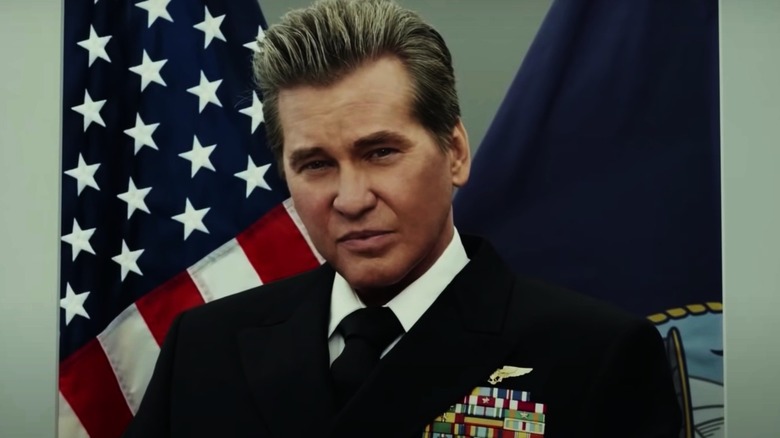
If you remember anything from the original "Top Gun," besides the adrenaline rush of high-speed aerial combat, it's probably sweat-glistened abs playing beach volleyball. But if you remember two things, the other one is undoubtedly going to be that the film features one of the best frenemy-ships betwee two ace pilots, Pete "Maverick" Mitchell (Tom Cruise) and Tom "Iceman" Kazansky (Val Kilmer). After 36 years, the sequel "Top Gun: Maverick" is finally here, and with Tom "Literal Embodiment of Modern Action Movies" Cruise is present and accounted for, his classic counterpart is along for the ride, with Kilmer back as Iceman.
Tom Cruise was clear from the start that he'd only do a "Top Gun" sequel with Kilmer on-board. What you might not know is that Kilmer's own life influenced an unexpected plot development for his character in "Top Gun: Maverick." In an interview with People Magazine conducted in 2021 for the release of the documentary "Val," the titular actor discussed a real-life health challenges and why sharing his story is more important to hi than ever. That personal struggle became part of Iceman.
Since we're talking about a key "Top Gun: Maverick" plot development, here's a spoiler warning for those who haven't seen the movie.
Once More Into The Danger Zone
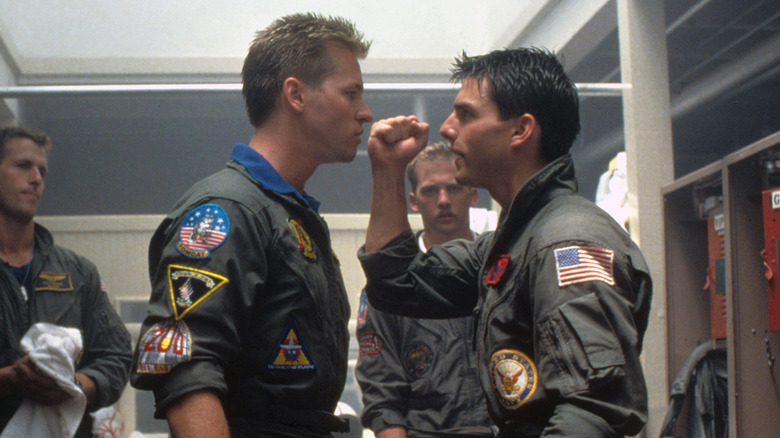
In "Top Gun: Maverick," we find our two flyboys in very different circumstances. Maverick has since become an experimental pilot, which suits his need for aerial speed, near-death experiences, and his inability to follow orders or take instruction. Meanwhile, "Iceman" has risen up the ranks to become a four-star Admiral, putting him in a position to pull Maverick into an unexpected position: the instructor of a new group of "Top Gun" recruits tasked with flying an impossible mission. Despite Tom Cruise's history on the big screen, it's quite the challenge.
Though their initial contact is only by way of text messages, Maverick and Iceman do have an in-person reunion. But it's a bittersweet meeting. We discover that Iceman has been fighting cancer, and regretfully, it has returned. In an emotional scene, as Iceman imparts some much-needed wisdom, his words mostly being translated through text on a computer screen, since speaking is extremely painful. It's a heartfelt reunion of the pair, and seeing such a beloved character face the painful hurdles of cancer really pulls at the heartstrings, especially when Iceman makes an effort to actually speak out loud to Maverick. Sadly, it also echoes Kilmer's real-life struggles with the disease, a battle he wants to be open about.
We Never Lost That Loving Feeling For Ice Man
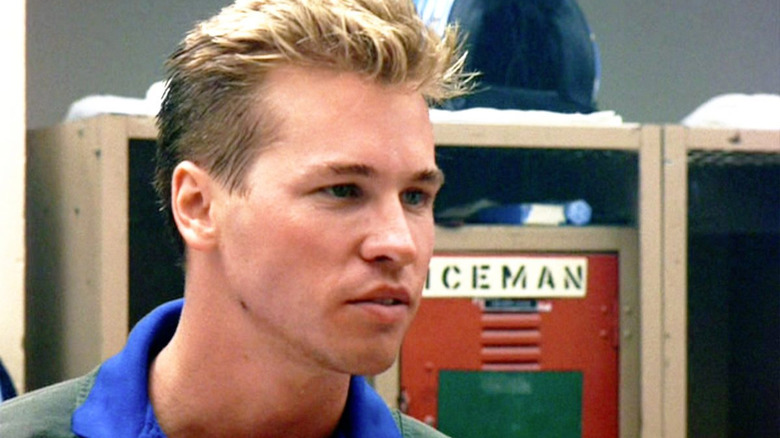
What many "Top Gun: Maverick" fans may not know is that Kilmer has long struggled with throat cancer. The disease, the intense radiation and chemotherapy treatments, and a tracheostomy left Kilmer with a damaged ability to speak, a trait that was carried over into "Top Gun: Maverick." These days, Kilmer is open about his struggle with the disease and its aftermath. "Now that it's more difficult to speak," he explained. "I want to tell my story more than ever." Like his on-screen counterpart, Kilmer utilizes technological aid to communicate:
"I can't speak without plugging this hole [in his throat...] You have to make the choice to breathe or to eat. It's an obstacle that is very present with whoever sees me."
In "Top Gun: Maverick," Val Kilmer's substantial return is a welcome surprise that becomes more emotional once we see the trials his character has faced since the original "Top Gun." In light of Kilmer's own journey, however, incorporating cancer into his character's evolution is a touching choice. Kilmer let his own experiences guide the arc of his classic character, and the film tackles the topic head-on rather than dancing around it. In a world where cancer still affects the lives of millions, Kilmer's choice to pointedly reflect his story in "Top Gun: Maverick" is a powerful one, and the film is all the better for it.
"Top Gun: Maverick" is in theaters now, and the documentary "Val" is available on Prime Video.
Read this next: 12 Awesome Action Movies That Never Got Sequels
The post How Val Kilmer's Real Life Influenced Iceman's Role in Top Gun: Maverick appeared first on /Film.
Elden Ring feels like a classic DnD adventure
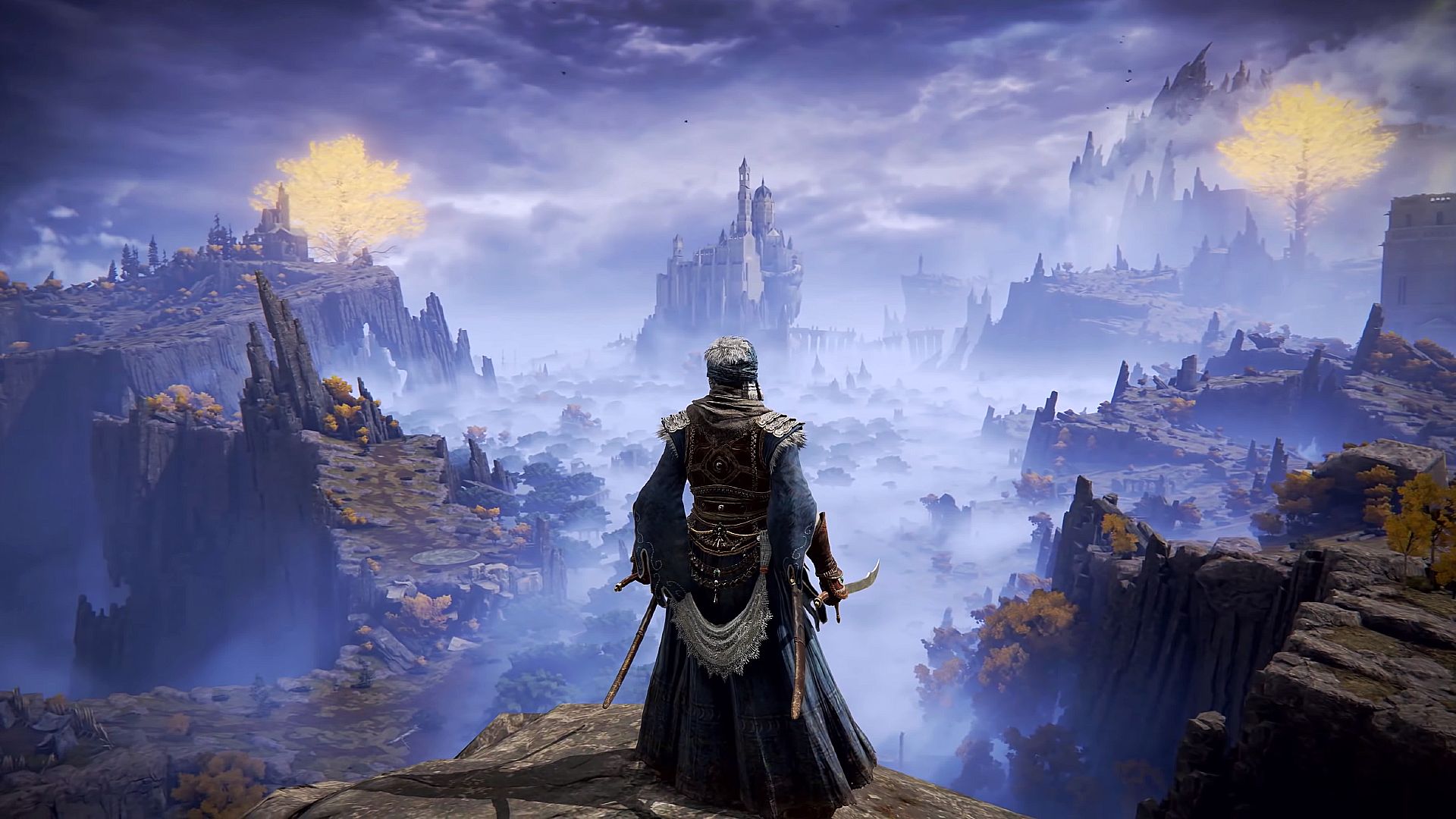
The influence of DND games on videogames can't be overstated. However, while many of the best RPGs owe their mechanics to tabletop gaming, digital adventures struggle when it comes to replicating the flair and theatre of a classic DnD adventure. Enter Elden Ring, FromSoftware’s latest Soulsborne game that, judging from a few hours with the network test, feels primed to capture the imaginative dramatics of a dedicated dungeon master.
Sure, RPG staples like Baldur's Gate, Divinity, and Dragon Age also emulate tabletop storytelling, and they do it well, but Elden Ring's pacing and atmosphere feel similarly authentic without sticking so rigidly to Wizards of the Coast's fantasy world; wherever you go you get the sense that your adventure would pair perfectly with the scene-by-scene narration of a dungeon master.
There are plenty of similarities between Hidetaka Miyazaki’s Soulsborne games and pen-and-paper escapades, however, by embracing a completely open world, Elden Ring becomes a treasure chest of decision-making and opportunity where every vista feels like a fork in the road. Do you chat to the friendly looking pot? Explore the ruins over yonder? Pick a fight with the knight on horseback? Or try to sneak past them?
RELATED LINKS: The best Elden Ring builds, Elden Ring bosses, The best Elden Ring classesExplaining the relationship between Star Trek: Strange New Worlds' La'An and Khan from the original series

If you've been watching Star Trek: Strange New Worlds, you know the reveal in episode 3 (spoliers ahead!) that security office La'An Noonien-Singh is actually related to Khan Noonien-Singh from Star Trek: The Original Series. This brief video offers more background. — Read the rest
Mass Effect: Legendary Edition
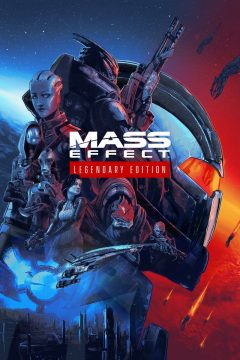
Bioware has had a rough decade. Dragon Age II started to show chinks in the armor, but could be forgiven by the fact that EA forced the game to be rushed out to build a brand. Star Wars: The Old Republic took a long time to find its footing after a disappointing launch and a variety of confused decisions from a team who didn’t quite understand MMOs. Mass Effect 3 ended the trilogy on a controversial note with an ending still debated to this day, and showed odd gameplay priorities with the multiplayer push.
Their big releases after that were Dragon Age Inquisition, a game that had a story that had to be finished up with DLC with a cliffhanger that has yet to be followed up, the messy and poorly managed Mass Effect Andromeda and its barren open worlds, and the unending disaster of bad decisions and unchecked ego that was Anthem. Bioware needed a win, especially after the storm of stories about their management’s failures and the bleeding of talent (currently kneecapping Dragon Age 4 and probably anything else on the docket we have yet to hear about).
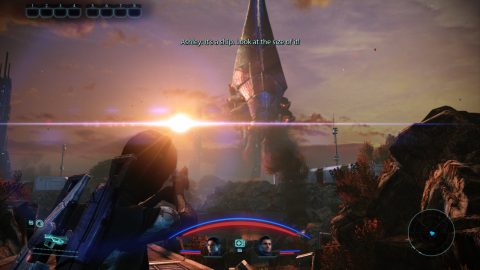
That win ended up being Mass Effect: Legendary Edition, a series of remasters of all three of the original games with various graphical updates and gameplay changes, all packaged together as a sixty dollar release for a single run netting you a hundred hours of playtime easily. After a rather bizarre series of promo images (including one that was just the same screenshot but now with another lens flare), the news got better as Bioware shared their changes, and the collection has gone over very, very well. This was a straight up win, and an impressive polishing of these wonderful games, if not particularly ambitious in the changes made. It doesn’t do anything wrong outside odd bugs (a Bioware standard at this point), but it also plays things fairly safe. Whether this is an overall positive or loss of a potential chance to improve on the originals is worth discussing.
The original Mass Effect is the most changed, getting a lot of texture and lighting updates. The lighting on Feros is darker for a more moody atmosphere that fits the mission, even it can be a bit hard to see things at a few points. That said, the game overall is brighter and should be toned down a bit in the options menu for a closer feel to the original. It’s most noticeable during the council sessions on the citadel. The combat hud is changed to match the looks of the later games that make important information easier to track, and you can now mark stuff in your inventory as junk for easy selling with merchants.
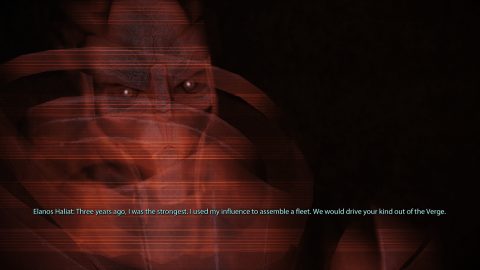
The character creator system has also been tweaked to look more in line with the other games, plus with some extra options from Andromeda, like more colorful lipstick and hair color options. This section also has hud and visual changes that make it look a bit more futuristic, including a neat bit where it tries to construct Shepard’s skeleton and body. Small detail, but one that shows how much the team wanted the original to line up better with the sequels.
The only bad change look wise is a single part of Eden Prime, where the introduction of Sovereign has a more natural sky that doesn’t have the same impact as the red one from the original. Ambient occlusion is also poorly implemented and huddles performance in all games in the collection. It looks nice but isn’t worth the odd frame drops. Also worth mentioning that dropping in Anderson’s model from ME3 into ME1 didn’t go quite right. He looks almost sickly at times, though now there’s no awkward skin color differences when he’s wearing a regular shirt during the citadel lockdown part of the game.

The aliens fair way better, even if the asari councilor in this game is strangely bright. The turians and krogan have never looked better, chocked with detail that was harder to make out before. It also should be mentioned minor side character Elanos Haliat, a pirate who organized the attack on Elysium that plays a part in a paragon Shepard’s back story, has a proper turian character model instead of the weird human one caused by a glitch that made no sense lore and timeline wise. Even the boss fight on Noveria has an added biotic barrier so the fight itself makes any sort of sense.
Gameplay wise, the Mako has had a few tweaks to give it a better feel to use, plus the experience penalty for using it is removed. It does have a terrible new default control where it looks where your camera is, causing bizarre turns, so turn that off in options. Melee has a dedicated button, and your guns act a bit differently. You can use any weapon from the start well, like being able to zoom with no shake with sniper rifles or the awful spread of the assault rifle being nerfed, putting points in weapon skills improving damage and such further.

Cover is snappier to enter and exit, and a few main story line fights in this one and Mass Effect 2 are modified to make them both fairer and more engaging. For example, the mission to rescue Liara now has a fight with the geth colossus that gives you starting cover. Even the thresher maws have been revamped into special mini-bosses with new attack phases and a shotgun spread style acid spit that requires different dodging tactics. It makes these encounters more engaging, rather than just beating down a damage sponge to make the experience to fall out. The difference in hacking minigames in the first game from platform to platform has also been uniformed into the PC version’s bypass style minigame, the simon says style one reserved for some side missions as was in the original PC version.
There’s plenty of other changes as well, including removing ME1 experience caps, lower cooldowns, added headshot damage on most enemies, and so forth. A few of the changes are slap dash, like the final boss of ME1 sometimes summoning extra geth during the fight, but they’re ultimately positives. DLC is also implemented into all three games, minus Pinnacle Station due to missing source code. With how bad that DLC was, though, that may be for the best.

ME2 and ME3 also spread out DLC weapons and armor into various vendors, which fixes that weird issue in ME3 where you can break a segment where you fire at a robot assassin with your side arm if you use an odd DLC weapon that doesn’t have regular fire. It’s more difficult to get every upgrade in ME2 without post-game play, though, due to having less money imported from ME1 after a patch. It makes the early game a bit more tense as resources are more of a concern. Doing Lair of the Shadow Broker earlier and messing around with stuff like the varren fights are now more incentivized for this reason.
These are also easily the best versions of the sequels, as they make one major change in each. For Mass Effect 2, the morality system now works as the game would suggest, instead of the nonsense ratio counting system that made the new interruption system pointless. Now your ability to charm and intimidate is based on paragon and renegade points properly, not a percentage of your binary choices on which you picked. The game is much easier now with more ammo drops, so you may want to go up a difficulty or two. As for Mass Effect 3, the multiplayer mode is absent, as is the galactic readiness mechanic that tried to force you to play the multiplayer and get suckered into the micro-transaction economy. You can easily earn the minimum amount of war assets, and go well above the full threshold to unlock every ending.
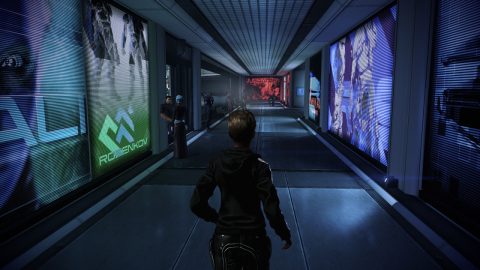
If there’s any major criticism that has to be layered at this collection, it’s that it’s simply a series of remasters instead of remakes. Major changes to the story are completely absent, so if you were expecting Bioware to correct past mistakes, you’ll be disappointed. Jack’s route with Femshep is still missing, particularly big snub that could have been a big feather in the cap for Bioware’s large queer following. There also no expanding on details or attempts to better connect story events between games outside correcting odd bugs related to how the games read saves and your choices in past games. This was clearly a limited project, so writing changes just weren’t in the cards, that requiring having to bring back in some voice actors for new lines, animating new scenes, etc.
This does benefit gameplay, though. The janky charm of ME1 is mostly preserved with new touches, and ME2 and ME3 remain mainly as you remember them, outside odd changes here and there. It’s just a shame the studio didn’t take the opportunity to go further in the spots where it could have really counted. It’s difficult to say if the success of this release will help Bioware out of the hole they dug themselves into, but hopefully it does do some good overall. This collection is faithful to the originals (if maybe a bit too faithful) and easy to play on a variety of platforms, and for the scope of the project, it’s definitely one of the better remasters out there. Nothing is inferior to the originals outside a single sky boss and some missing DLC achievements in a release with nearly 120 achievements as it is.
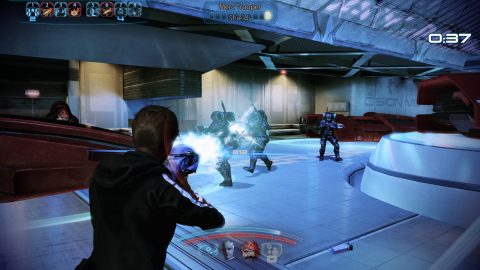
If you haven’t tried the series yet, this is a great way to do it, and arguably the definitive way to play the sequels. If you’re new to Mass Effect, start here, and if you want, maybe revisit the original game’s janky but lovable charms if you’re into that sort of thing. These games are truly something special, innovative releases that changed the landscape of the western RPG, showing a level of presentation and action not thought possible before the first one came out. They’re a piece of history that deserve to be remembered and experienced, and this collection does exactly that.
Also, this is easily the best way to play on PC. Even with the series now on Steam, bypassing Origin issues, the Steam version of Mass Effect remains a weird one to mess with for importing characters to later games, the product of another studio and Bioware not really implementing an import system with their data saving methods in mind. This collection makes the process easy and clean, no need to move around files on your machine proper. The whole run feels more seamless with the unified launcher too, and makes it simple to switch from game to game as you want.
Mass Effect: Legendary Edition was first posted on May 27, 2022 at 11:03 am.
©2017 "Hardcore Gaming 101". Use of this feed is for personal non-commercial use only. If you are not reading this article in your feed reader, then the site is guilty of copyright infringement. Please contact me at kurt@hardcoregaming101.net
Larger-than-30TB Hard Drives Are Coming Much Sooner Than Expected
Read more of this story at Slashdot.
5 Off My Head: The Mad Count Chris
-----------------------------
Runners-up: Hugo, Gremlins 2: The New Batch, Horror Express, The Whip and the Body, Hercules in the Haunted World, The Hound of the Baskervilles, Corridors of Blood, Star WarsMeet The Adorable Young Actor Who Plays [REDACTED] In Obi-Wan Kenobi
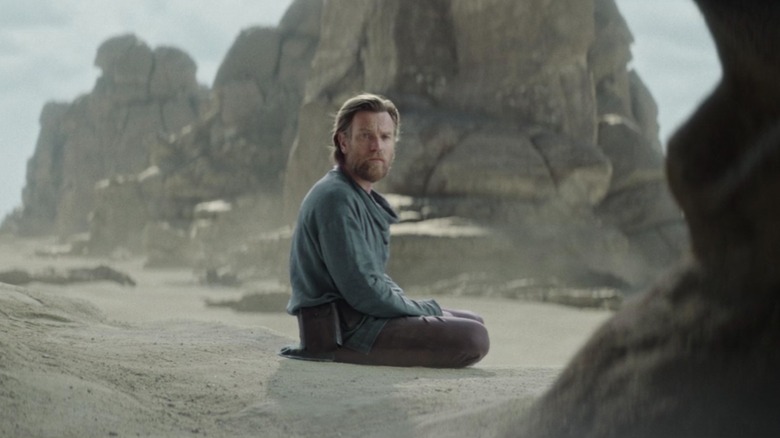
Warning: Major spoilers ahead for episodes 1 and 2 of "Obi-Wan Kenobi."
The first two episodes of "Obi-Wan Kenobi" has a fair share of surprise cameos and storylines, but none quite as delightful and sweet as the introduction of a young Leia Organa, played by Vivien Lyra Blair. While "Star Wars" fans were expecting Grant Feely's Luke Skywalker to make an appearance, since he'd already been revealed in the trailers, Leia's presence was a relatively surprising storyline to follow, which proves to be crucial in steering Obi-Wan's (Ewan McGregor) trajectory forward.
Leia's story begins in Alderaan, with her parents Bail (Jimmy Smitts) and Breha Organa (Simone Kessell), but she's soon kidnapped by mercenaries sent forth by an Inquisitor called Fifth Sister, or Reva (Moses Ingram). While Reva is unaware of how important Leia is, she orders the child to be kidnapped after she tracks down a link between the Senator and Obi-Wan, and hopes to use Leia as bait to draw Obi-Wan out of hiding. As she predicted, this propels Obi-Wan (after much hesitation) to abandon his post in Tatooine and search for the girl, who is being held on the planet Daiyu.
Vivien's performance as Leia is enjoyable and riveting, as she manages to capture the best parts of the beloved character — her wit, charm, guts, and inquisitiveness.
Where You've Seen Young Leia's Actor Before
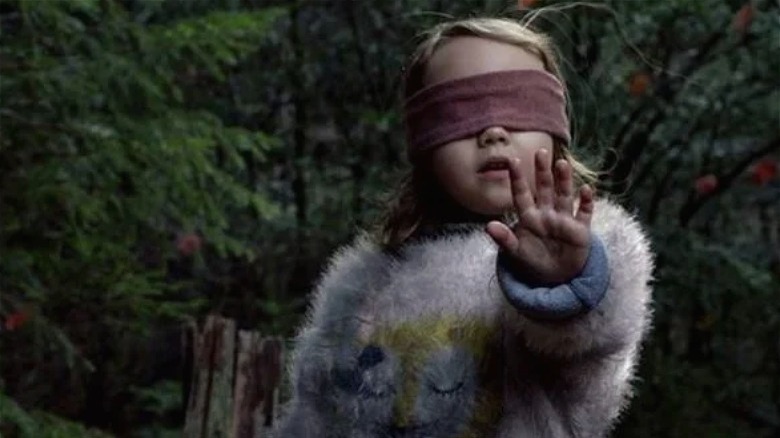
You may recognize Blair from her role in the Netflix film, "Bird Box," which also stars Sandra Bullock and Rosa Salazar, among others. Though she's credited only as "Girl," Blair actually plays a key role in "Bird Box" as the daughter of Bullock's character.
Despite her young age, Blair already has a respectable list of credits, including playing a young Eleanor Roosevelt in the Prime Video series "The First Lady," and Hazel in the NBC sitcom "Indebted." She also appeared in the film "We Can Be Heroes," alongside "The Mandalorian" star Pedro Pascal.
Vivien's upcoming projects include "Dear Zoe," which stars Sadie Sink, "The Boogeyman" (an adaptation of the Stephen King novel), and "Heritage Day," a short by Lara Everly.
How Leia's Character Adds Depth To The Show
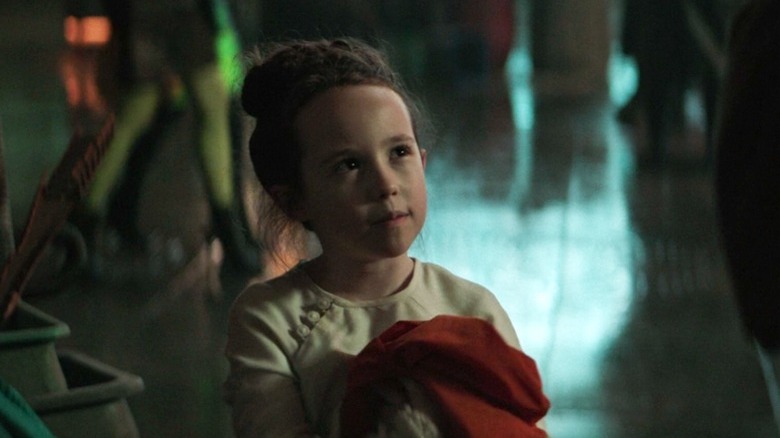
This is not the first time a young Leia has been portrayed in the Star Wars" franchise, as a similar iteration of the character (stubborn, feisty) appeared in a comic called "The Weapons Master!," in which an older Leia recounts how she learned how to defend herself.
Leia's presence in Alderaan has always been a double-edged sword: while she lived a lavish life and had access to the resources she needed while being parented by compassionate, well-rounded individuals, she was always at the nexus of danger, being the daughter of a Senator. This made Leia's life more politically charged in comparison to Luke's, who was relatively safer in Tatooine, although he grew up in poverty and felt cut off from the people around him.
Vivien plays Leia with great skill, striking a balance of personality between both Anakin and Padmé, and adding a layer of emotionality to an already-dense series. Even after she is kidnapped and alone on an alien planet, Leia uses her resourcefulness quite well (even managing to kick an underprepared Obi-Wan in self-defense) and keeps her wits about her as much as possible.
Moreover, Leia crossing paths with Obi-Wan and eventually being saved by him adds more context to older Leia's hologram message in "A New Hope." The reason why Leia trusts Obi-Wan so instinctively in the first "Star Wars" film, to the point of recognizing his alias Ben Kenobi, is because she was saved by him from kidnappers as a child. This makes so much canonical sense.
Episodes 1 and 2 of "Obi-Wan Kenobi" are now streaming on Disney+.
Read this next: The 11 Best Star Wars Droids Ranked By Usefulness
The post Meet the Adorable Young Actor Who Plays [REDACTED] in Obi-Wan Kenobi appeared first on /Film.
Uvalde school massacre survivor smeared the blood of her friend over face and played dead because apparently that's a skill a 11yo needs in America [Repeat]
Stranger Things Season 4 Is All About Slashers
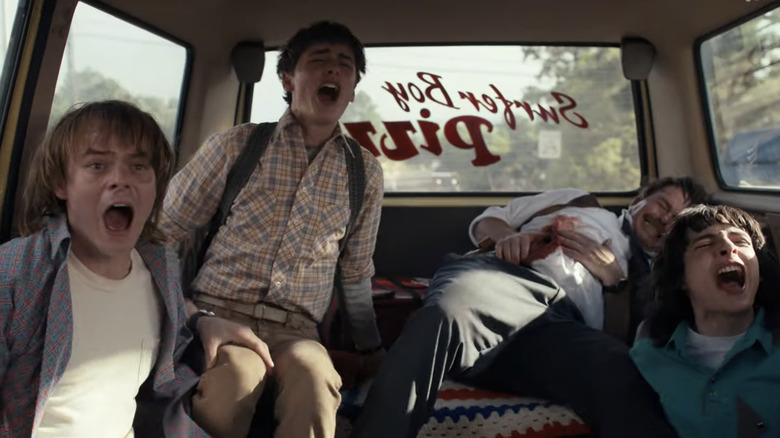
"Stranger Things" is a master class in paying homage to ones influences. The show's creators, the Duffer Brothers, are children of the '80s through and through, and their hit Netflix series never shies away from making direct nods to their creative references.
In approaching "Stranger Things" season 4, they wanted to return even more closely to the source material that first inspired them to enter the horror genre.
Warning: Spoilers for "Stranger Things" season 4 follow. Beware!
Scream, Friday The 13th, And The Teen Slasher
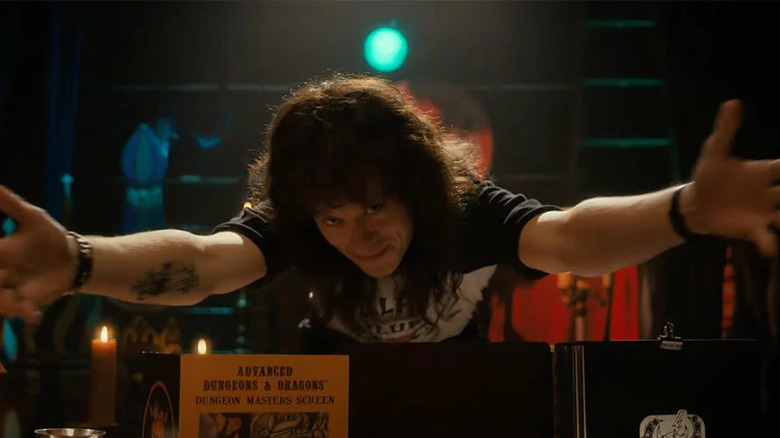
Season 4 finds the Hawkins kids in their first year of high school, and the creators waste no time in making reference to teen slasher films like "Friday the 13th" (1980) and "Scream" (1996). Classic high school archetypes from the popular cheerleader to the school newspaper nerd are introduced only to be killed off. Just like "Scream" makes direct reference to the horror films that it draws inspiration from, so too does "Stranger Things." These nods to "Scream" and its predecessors are a tongue-in-cheek acknowledgement of the derivative nature of the series, just as "Scream" made ironic use of horror cliches.
At Hawkins High School, the boys have all joined a new D&D group called "The Hellfire Club" run by a group of outcast upperclassmen. Through super-senior Eddie Munson's campaign, a new villain is introduced into the fold: Vecna, an intelligent demon that preys on the minds of its victims, visiting them with nightmares and hallucinations before mutilating them.
Vecna Is The Duffer Brothers' Freddy Kreuger
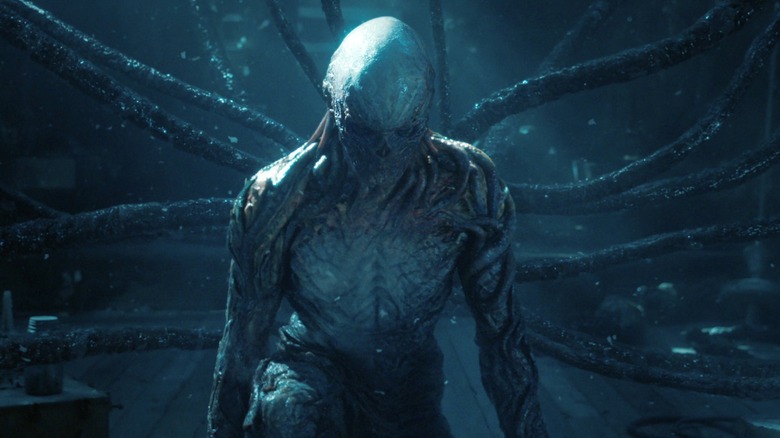
Vecna's powers and character design are very clearly inspired by Freddy Krueger from the "A Nightmare on Elm Street" series. Freddy Krueger was a factory worker that died in a fire and haunts the dreams of his victims. Robert Englund, who played Freddy in the classic horror film series, even joined the "Stranger Things" 4 cast as a nod to this source material.
When characters find their way into Vecna's dream landscape under his trance, they are brutally murdered both in their hallucinations and in real life. The same goes for those killed by Freddy Krueger. Just like the boiler room where Freddy Krueger died, Vecna has a specific house connected to a past trauma that serves as his base of operations. Dustin even points out this comparison directly.
The "Nightmare" series is far from the only slasher that inspired the Duffer Brothers in season 4. They had "always wanted to do our ... version of a Freddy Krueger, or a Pinhead, or a Pennywise," the creators told IGN. These monsters with the power to unhinge their victims were the "supernatural villains that terrified us the most when we growing up" and were direct inspirations for Vecna.
Pinhead And Pennywise Were Also Inspirations
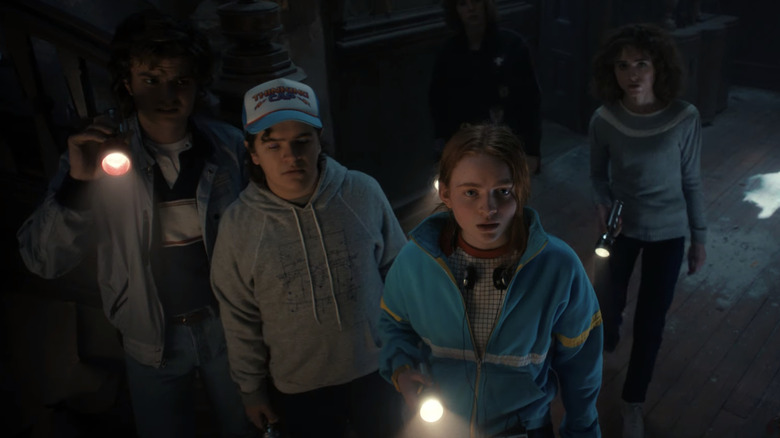
Pinhead is the villain of the "Hellraiser" series, a demon from a Hell dimension much like the Upside Down. He is deeply sadistic with a penchant for ominous one-liners. The Duffer Brothers looked to Pinhead when writing Vecna's dialogue, so many of Vecna's lines "sound like something Pinhead would say." Pinhead tortures people by appearing to them as their loved ones, which he accomplishes by stealing their skin. Similarly, Vecna takes the form of people close to his victims in order to terrify and alienate them.
The "It" film series also bears a few similarities to "Stranger Things" 4. Earlier seasons of the show were obviously influenced by Stephen King's story, given that a supernatural mystery is solved by a group of children. As an ominous and intelligent threat that lived under the ground of an otherwise peaceful town, Pennywise was a clear point of reference for Vecna in particular. Pennywise also has a specific connection to a certain house, just like Vecna does.
Victor Creel Was Pulled Straight Out Of A Slasher
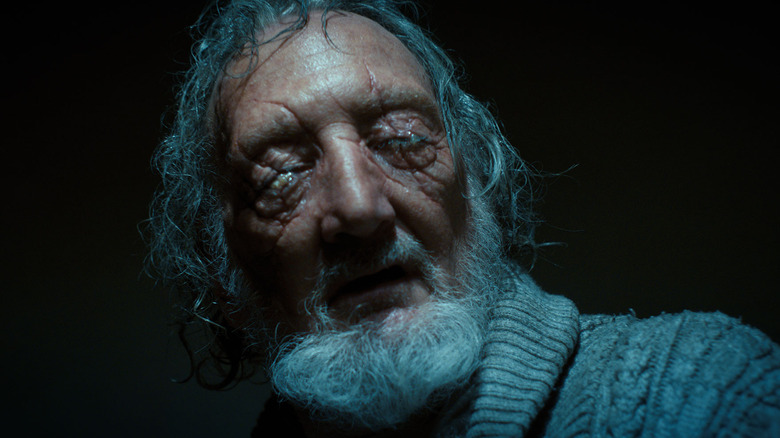
Along with Vecna, another character is introduced in Season 4 — Victor Creel, played by Robert Englund. Creel is locked away in a mental institution after being blamed for the brutal murder of his family, committed by Vecna. In hopes of learning some clue as to how to defeat Vecna, Nancy and Robin visit Victor at the mental institution in a scene that closely echoes Clarice's interview of notorious serial killer Hannibal Lecter in "The Silence of the Lambs" (1991). The characters are incredibly different, but the suspenseful camera movements leading the girls to Creel's cell are reminiscent of the 1991 film.
Creel reluctantly reveals his backstory to the girls, explaining that he unwittingly moved his family into a haunted house. His story, which culminates in a paranormal massacre where only he is left alive, is a nod to the haunted house classic "The Amityville Horror." In the 1979 slasher, a young family moves into a new home where, one year earlier, a man murdered his entire family. The supernatural activity in this film is also tied to satanic worship, just as the murders committed by Vecna are attributed to the supposed satanic worship of Eddie Munson and The Hellfire Club.
By combining references to these horror fan favorites, the Duffer Brothers saturate "Stranger Things" 4 with Easter eggs and genre-mashed storylines that are sure to make this season the most exciting yet.
Read this next: 12 Shows Like Stranger Things You Definitely Need To Stream
The post Stranger Things Season 4 Is All About Slashers appeared first on /Film.
Are We on the Verge of an 8K Resolution Breakthrough in Gaming?
Read more of this story at Slashdot.
How Sony Is Making Old PlayStation Games Look More Nostalgic
In a world where game developers are pushing the boundaries for hyper-realism, there's an odd sort of comfort to old-school-looking graphics. After all, real life isn't always fun, so it makes sense for gamers to crave the allure of nostalgia.
The Leviathan update to No Man’s Sky is live
Take on The Leviathan Expedition in the incredibly engaging space exploration game. No Man’s Sky is now available on GOG 50% off until the 30th of May 2022, 10 PM UTC.
NT video miniport UHD
I’ve finally managed to update the previously released NT video miniport. The reason for the update was indirect, hacking up the video “hardware” access code to support other environments. That led me to separate the generic mode set code from the mode table oriented logic. Since the NT miniport does not need the mode tables, the resulting boxvideo.sys is now about 1 KB smaller without losing any functionality.
As before, the miniport should run on any x86 version of NT from 3.1 up to 7, with the caveat that for NT 3.x, the user has to supply FRAMEBUF.DLL from the NT installation media (see included README file). Also for NT 3.1 only, the installation and mode selection process is different from later versions.
At some previous point, so long ago that I don’t even remember, I expanded the list of supported modes to go up to 5,120×2,880 pixels. This is not extensively tested because I don’t have such a large display, but at first glance it does not appear to be completely broken.
Get the updated driver here. The source code can be viewed here.
USB Device Redux, with Timelines
From the USBStor key:
Willow Series Takes Place 20 Years After The Movie, Will Feature The Return Of Sorsha
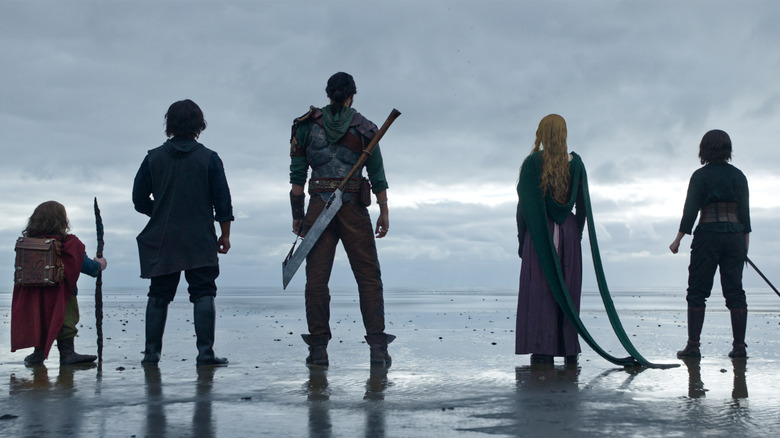
In 1988, five years after the conclusion of the "Star Wars" original trilogy, George Lucas tried his hand at another original fantasy saga. Despite months of hype that began with a tantalizingly opaque teaser, "Willow" fell far short of Lucas's box office expectations (according to John Baxter's "Mythmaker: The Life and Work of George Lucas," the producer had hoped it would do business on par with "E.T. - The Extra-Terrestrial"). But over the years, the Ron Howard-directed film gradually found a fervent following. People fell in love with Warwick Davis' plucky, would-be wizard Willow Ufgood, and his quest to safely deliver infant Elora Danan, the future Princess of Tir Asleen, to sorceress Fin Raziel, who must defeat the evil Queen Bavmorda of Nockmaar.
While the plot was tied up pretty neatly at the end of the movie, fans have long clamored for a sequel. Their prayers were answered when Lucasfilm announced plans for a "Willow" series to be aired on Disney+. Today, at the 2022 Star Wars Celebration in Anaheim, California, the Ufgood faithful got their first look at the teaser, and also heard from series executive producers Howard and Jonathan Kasdan (who co-developed the series with Wendy Mericle).
The Return Of The Sorceror
Kasdan told the Celebration crowd that he was a mere seven years old when he saw the teaser for "Willow." At the time, he was convinced it would be "bigger than 'Star Wars'." "It wasn't," said Howard. Nevertheless, when Kasdan and his legendary screenwriter father Lawrence Kasdan co-wrote "Solo: A Star Wars" for Howard, he approached the director about making a "Willow" sequel series for Disney+.
"Jon and I would talk about 'Willow' all the time between setups on 'Solo,'" said Howard. "I always thought we could do 'Willow' as a series, because George believed in that format." Kasdan concurred, but maintained that his involvement was contingent on the return of Davis as Willow. Per Kasdan, "You don't have 'Willow' without Warwick Davis."
Davis was then brought out on stage to raucous applause. He confessed to feeling a bit "old" in reviving one of his best-known roles, but averred that a "Willow" series "is something I've always wanted to do." Davis was joined onstage by Joanne Whalley, who's also back as the fierce warrior Sorsha. "It's incredible to be here," she said. "And I still can't quite -- I'm back with the sword. I've got Sorsha's sword in my hand."
A New Generation Of Warriors
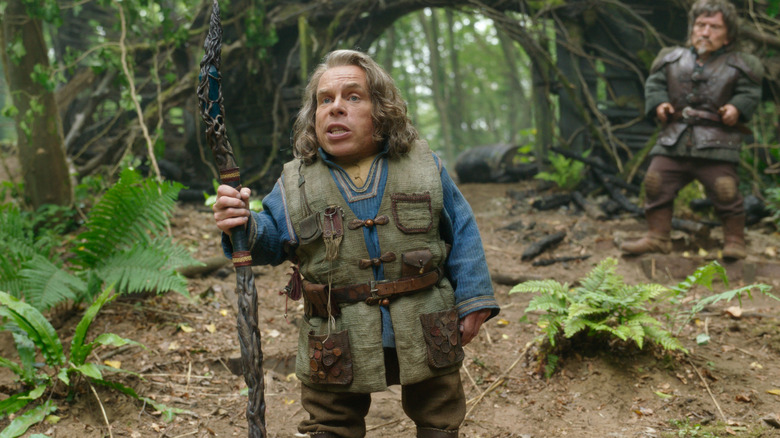
The new series takes place 20 years after the movie, or about 250 moons in Willow speak. Ruby Cruz joins the saga as Kit, the (what else?) warrior daughter of Sorsha and Madmartigan (Val Kilmer) who sets out to rescue her twin brother. Ellie Bramber plays Dove, a maid who falls for Kit's brother, while Erin Kellyman co-stars as Jade, a servant who dreams of becoming a warrior like Kit. Their quest leads them to seek the aid of Willow, who is now a powerful sorcerer.
"Willow" hits Disney+ on November 30, 2022.
An epic period fantasy series with a modern sensibility set in an enchanted land of breathtaking beauty, "Willow" features a diverse international cast with Jonathan Kasdan, Ron Howard, Wendy Mericle, Kathleen Kennedy, and Michelle Rejwan serving as executive producers. The story began with an aspiring magician from a Nelwyn village and an infant girl destined to unite the realms, who together helped destroy an evil queen and banish the forces of darkness. Now, in a magical world where brownies, sorcerers, trolls, and other mystical creatures flourish, the adventure continues, as an unlikely group of heroes set off on a dangerous quest to places far beyond their home, where they must face their inner demons and come together to save their world.
Read this next: 13 Fantasy Films That Never Got Sequels
The post Willow Series Takes Place 20 Years After the Movie, Will Feature the Return of Sorsha appeared first on /Film.
Elden Ring’s Director Favorite Boss Is Starscourge Radahn; The Witcher 3, Zelda: Breath of the Wild Have Inspired the Game

Elden Ring's director Hidetaka Miyazaki's favorite boss in the game is Starscourge Radahn, as revealed in a new interview.
In a fresh interview posted on the Official Japanese Xbox website, From Software's president revealed that the challenging boss is among his favorites for the feeling of loneliness that the battle evokes, which contrasts with the concept of the Radahn Festival, which many in the development team did not take seriously at first. Hidetaka Miyazaki also mentions Godrick the Grafted and Rykard the Lord of Blasphemy as some of his favorites.
The Elden Ring director has also been asked if any other open-world game inspired him. While Miyazaki-san wasn't inspired by a particular game, he played many excellent games that have influenced him, singling out The Elder Scrolls series, The Witcher 3, and The Legend of Zelda: Breath of the Wild. The influence of the latest entry in the Zelda series is quite evident, in my opinion, so it is not surprising to see Hidetaka Miyazaki mentioning it as an influential game.
Elden Ring is now available on PC, PlayStation 5, PlayStation 4, Xbox Series X, Xbox Series S, and Xbox One worldwide. Learn more about the game by checking out my review.
I tried hard to find any faults in Elden Ring, but no matter how hard I tried, I couldn't find any outside of some technical issues that the developers could fix via patches. I firmly believe that perfection doesn't exist and that it is always possible to improve, but I really couldn't think of anything that Elden Ring could have done better. As such, the game wholly deserves a perfect score, an honor I would have given only to a couple of other modern games, not only for its extremely high quality but also for what it accomplished with its open world and for how it will surely influence video games as a whole in the future.
The post Elden Ring’s Director Favorite Boss Is Starscourge Radahn; The Witcher 3, Zelda: Breath of the Wild Have Inspired the Game by Francesco De Meo appeared first on Wccftech.
A Short History Of The Gorn In The Star Trek Universe
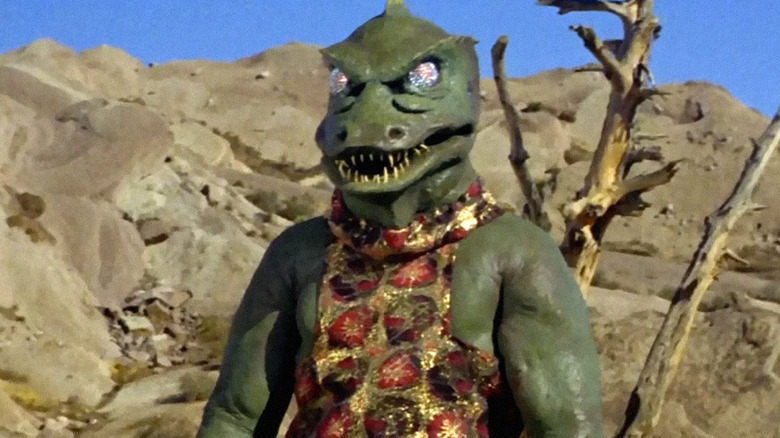
This episode contains minor spoilers ahead for episode 4 of "Star Trek: Strange New Worlds."
Canon is a funny thing in the world of "Star Trek." The franchise, which has churned out 12 criss-crossing series (and just as many movies) in its 56-year history, has to tread carefully where continuity is concerned. If first contact with an alien species is said to occur in one series, it's difficult to feature them in others that occur earlier — tempting as the concept might be. It's a rule that's made certain "Trek" villains, like the Gorn, off-limits for certain eras. Since the Gorn "officially" made first contact with Starfleet in "The Original Series," they can't "officially" appear in any prequels. But as we've seen with shows like "Enterprise," "Star Trek: Discovery," and now "Strange New Worlds," it's still possible to make use of the classic villains without disturbing the canon.
The Gorn Identity
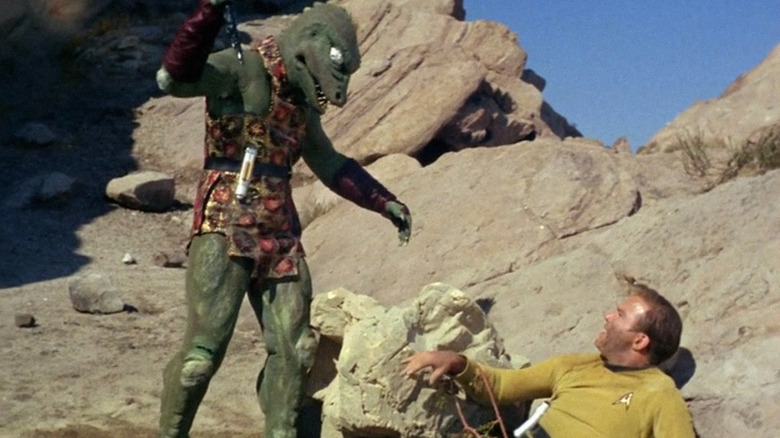
The Gorn first appeared in the original series episode "Arena," and even then their mystique was a huge part of their appeal. Kirk, Spock and McCoy run into the Gorn on a Federation outpost on Cestus III — and the aliens ruthlessly attack before the bridge crew even catches a glimpse of them. The Gorn had even lured the Enterprise to Cestus III with a fabricated invitation; by the time Kirk and Spock realize that they've been deceived, the colony on Cestus had already been destroyed.
Kirk later sets off to avenge the colony's untimely destruction, pursuing the Gorn ship into unknown space. There, both the Enterprise and the Gorn are apprehended by a highly-advanced alien species called the Metrons. This third party has absolutely no taste for violence, but they recognize that both humans and Gorn share a primitive inclination for it. Their solution is to drop Kirk onto a nearby planet with the captain of the Gorn ship, and allow them to sort out their issues the old-fashioned way: A fight to the death.
It's on this planet that Kirk gets a good look at the Gorn for the very first time. They're essentially just giant, sentient lizards, but even without their formidable technology, the Gorn captain possesses a brute strength that nearly kills Kirk. Fortunately, Kirk still does have his wits — as well as a trove of raw minerals, which he uses to fashion a cannon that takes the Gorn out of commission. Kirk eventually decides to spare the captain's life, with the hopes that the Federation can one day appeal to this alien race — but it'd be some time before the Gorn were used in the Prime timeline once more.
Mirror, Mirror
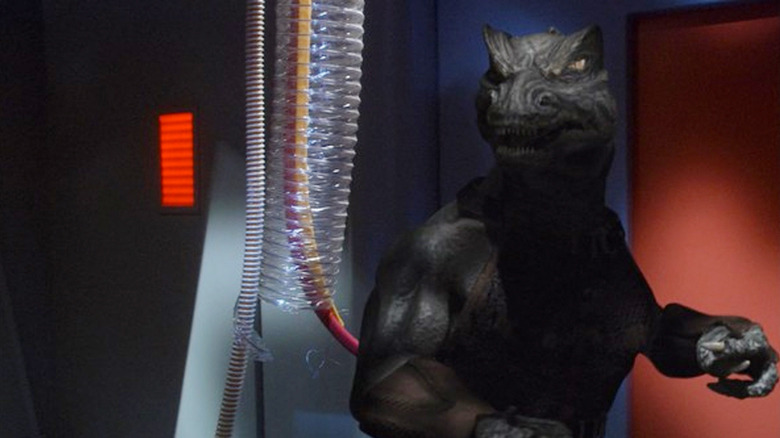
Since the Gorn were so rarely seen in Federation space, they were reduced to legend in other stories that followed the original series. The species is mentioned on and off throughout the franchise, and even appear briefly in the animated series "Star Trek: Lower Decks," but their second most prominent role in the "Trek" canon actually takes place in the Mirror universe.
The Mirror universe is essentially an alternate reality where everyone is evil (and/or horny) all the time, so there's not technically a need for an alien species that most consider inherently evil. However, introducing the Gorn to an alternate timeline was the perfect way for original series prequels like "Enterprise" to reimagine first contact with the species. "Enterprise" takes place approximately 100 years before the events of the original series, and follows the crew of the very first U.S.S. Enterprise, captained by Jonathan Archer (Scott Bakula). But in the Mirror dimension — as explored in the fourth season arc "In a Mirror Darkly" — Archer is the mutinous first officer of the I.S.S. Enterprise. In a dizzying turn of events, Archer gets his hands on a Federation ship from the Prime timeline: The U.S.S. Defiant.
Archer intends to use this advanced ship to quell the rebellion against the Terran Empire, but he has to contend with a few stowaways before bringing his plans to fruition, namely a murderous Gorn named Slar. Fittingly, Archer is forced into a little hand to hand combat with the Gorn, just like Kirk — but he also has the resources of his super-advanced ship at his disposal, and he uses them well. Since this is the Mirror dimension, the mercy that Kirk extended to his Gorn adversary is nowhere to be found. Archer kills Slar without thinking twice, making for another short-lived appearance for the species.
The Menagerie
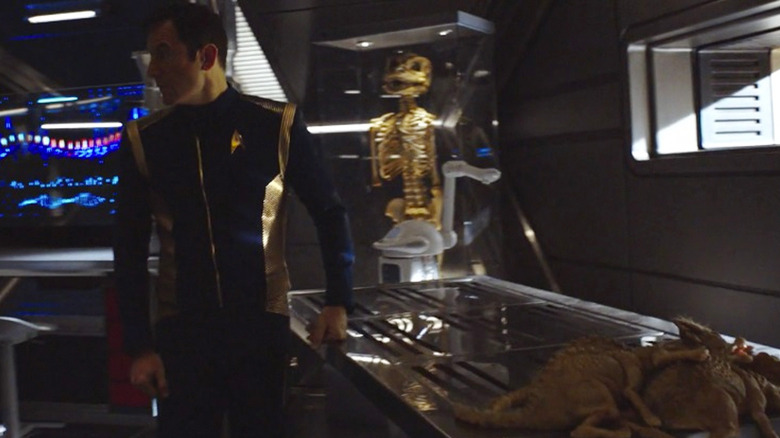
The Mirror universe would become a clever loophole for "Trek" writers to explore — or at least reference — the Gorn in prequels to the original series. "Discovery" made use of this same conceit in its first season. The first captain of the titular vessel, Gabriel Lorca (Jason Isaacs), displayed a Gorn skeleton one of his many offices ... but seeing as Lorca was actually from the Mirror universe, that Easter egg doesn't necessarily have to be explained. Plus, the Gorn in question wasn't exactly alive, so it couldn't really count as first contact.
In truth, the mere presence of a Gorn, however brief, is usually enough to excite longtime fans of the "Trek" franchise. They're an utterly classic villain, as much for their mystique as for their capacity for cruelty. It's the latter that makes the Gorn so interesting to writer and producer Akiva Goldsman, who's been helping to shape the world of "Trek" in recent years on shows like "Picard" and "Strange New Worlds."
"I have this long-standing love for the Gorn," Goldsman told /Film. Though "Trek" series have always "generated empathy" for alien species, Goldsman has always "yearned a little bit" for a truly evil adversary. "It's been a while since we've had that, and the Gorn sort of presented themselves as such."
Children Of The Gorn
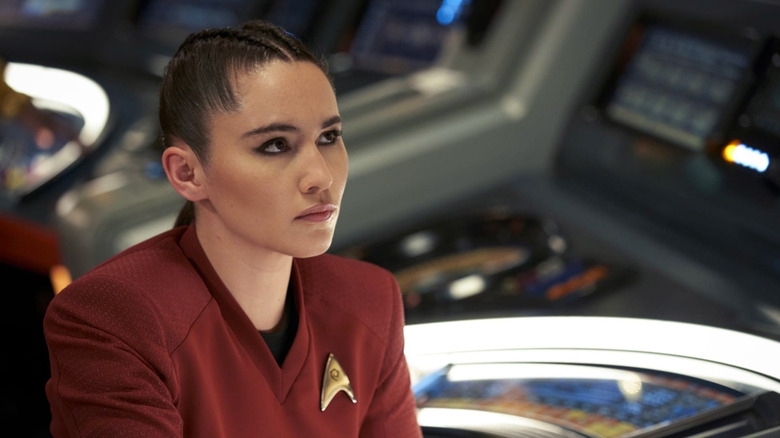
Obsessed as Goldsman may be with the Gorn, it's taken a while for the showrunner to bring them back to "Trek" in a larger capacity. That opportunity finally presented itself in "Strange New Worlds," primarily through Enterprise security officer La'an Noonien-Singh (Christina Chong). Though the Federation can't physically meet the Gorn before the events of the original series, La'an has some firsthand experience with the species: Her entire family was once captured and imprisoned by the Gorn, and she was the sole survivor of the tragedy.
"Strange New Worlds" treats La'an's account as a report of "unconfirmed" first contact, but that doesn't make it any less terrifying. It's a brilliant way to capitalize on the potential of the Gorn, especially since it doesn't really break canon. After the Enterprise's run-in with a Gorn ship in the latest episode, titled "Momento Mori," it's clear that there's tons of potential for the Gorn as a seriously-formidable adversary moving forward. It's just a question of how far the "Strange New Worlds" team can push the limits of canon. But if the popularity of the Gorn is any indication, there's certainly an appetite for more of the alien species moving forward.
"Star Trek: Strange New Worlds" is currently streaming on Paramount+.
Read this next: Every Star Trek Show And Movie In Chronological Order
The post A Short History of the Gorn in the Star Trek Universe appeared first on /Film.
Get a Free Endless Space 2 Steam key
Endless Space 2 is a Strategic Space Opera, featuring the compelling “just one more turn” gameplay, set in the mysterious Endless universe. Get it for free on Steam today!
The post Get a Free Endless Space 2 Steam key appeared first on Indie Game Bundles.
David Cronenberg On Pushing The Body To Its Limits In Crimes Of The Future, His First Film In 8 Years [Interview]
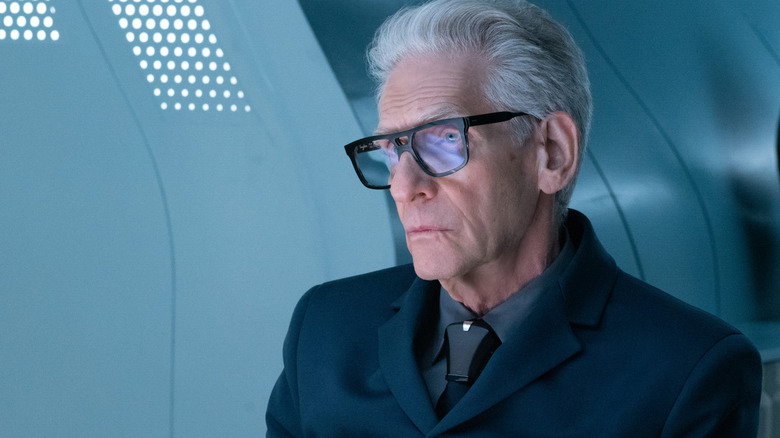
The body isn't just a vessel for the soul; it's a vessel for performance, for experimentation, for breathing life into something new. We are vehicles for evolution by default, and thus it stands to reason that some time in the future, we may bear witness to ourselves evolving in real time, becoming that something new. It's a mind-blowing concept, but David Cronenberg's latest film, "Crimes of the Future," dares to show us that reality in all its gory, painfully painless glory.
"Crimes of the Future" follows Saul Tenser (Viggo Mortensen), a performance artist who isn't exactly in full control of his body living sometime in a dystopian future where pain has become nearly nonexistent for humans. The character — played with beautiful restraint by Mortensen — is known for producing new, unidentifiable organs, which his performance partner Caprice (the enigmatic and fierce Léa Seydoux) tattoos inside his body and then removes during their shows. Their perverse yet artistic profession attracts the attention of two bookish employees at the National Organ Registry, Whippet (Don McKellar) and Timlin (a punchy and pitch-perfect Kristen Stewart), whose interest in Saul and Caprice's proclivities transition from clinical to near-erotic fascination. Meanwhile, a troubled father whose strange and unusual son is murdered by his mother searches for a way to join the performance fray by way of his dead child.
The bizarre and incisive film had its world premiere at the Cannes Film Festival, where I sat down with writer-director David Cronenberg himself to analyze why he wanted to bring a 20-year-old script into the world, how humans push their bodies to the limit, and the prevalent theme of voyeurism in his first film in eight years.
'There Is A Will In Our Nervous System To Play With The Body.'
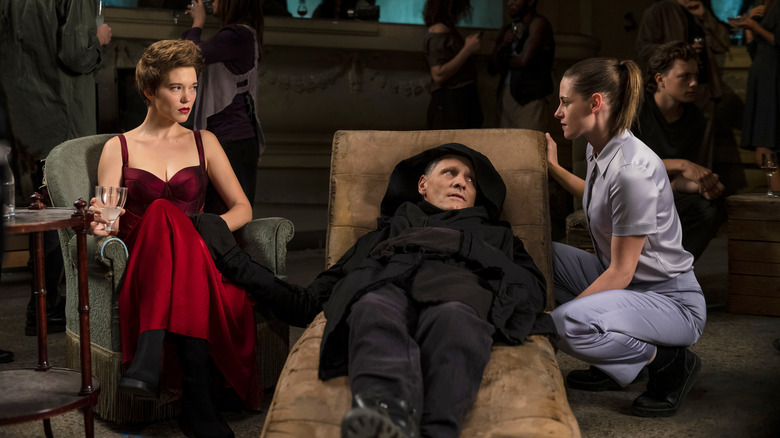
What is fascinating to you about the ways humans are compelled to push their bodies to the limit? Because that's obviously a through-line in your filmography, and I feel like you really double down on that in this film, especially with the "body is reality" tagline.
We're used to athletes pushing their bodies for a very specific purpose: to excel at their particular art, sport. And so body transformation because of willpower and effort is not uncommon with human beings. It's always been. There have always been athletes who compete and stuff, but now I think, and, in fact, it turns out that surgery — including cosmetic surgery — has existed for thousands of years as well, before anesthetics, before antibiotics. So it's obvious that there is a will in our nervous system to play with the body, to play with what happens to the body, to play with the way you mature, grow up, the way you grow old. It's part of control. You can think of it in philosophical terms.
It's the desire to perhaps to feel that you are controlling death, that you are controlling the inevitability of death, but of course we do that whenever we're trying to cure someone of cancer or something else. So I think it's really, it's part of that. Everything we do as humans is complex, it's never simple, like medical. It's never simple; it's cultural, it's political, it's historical, phenomenological, philosophical, all of that. It's always mixed in and makes things either difficult or simple. But at base, it's always a complex operation, even when it's your body, but there can't be anything more intimate or more personal than messing with your body.
Voyeurism is a real theme in this film, as it relates especially to the way we're recording things everyday nowadays. What made you want to highlight that element within the story? It's really interesting to me, since you [wrote] this film a long time ago, when this was not necessarily the norm. We've grown into that.
Yes. As you can see now, people [walk] down a beautiful street and they're not looking at the street, they're looking at the phone, looking at the street. And they're going to record a memory and then they'll only really sort of experience the street later when they go over their photos and say, "Oh, I didn't notice that great tree." So is it, once again, an attempt to control. I mean, it gives you some control. It's replacing your own memory with a computer memory, but a computer memory that's relatively stable compared with human memory, which is always very creative. We don't have anything like a one to one memory where we accurately video something. It's always a creative act to remember something. And as you grow older, you realize how extreme that is. It really is. You have to ask your friends or your spouse or whoever, whether that really happened, or did I imagine, is it a real memory?
So I've always been interested in that. Of course, it's partly of the essence of being a filmmaker, but I was interested in that long ago. I got the first VHS camera that you could afford — there was a home camera — just because it seems so phenomenal to be able to do that. And now, of course, what phones do is extraordinary, but the desire to do that, I think, has always been there, even when people were carving memories in stone.
'It Still Took Them Three Years Because It's So Difficult To [Find] Financing.'
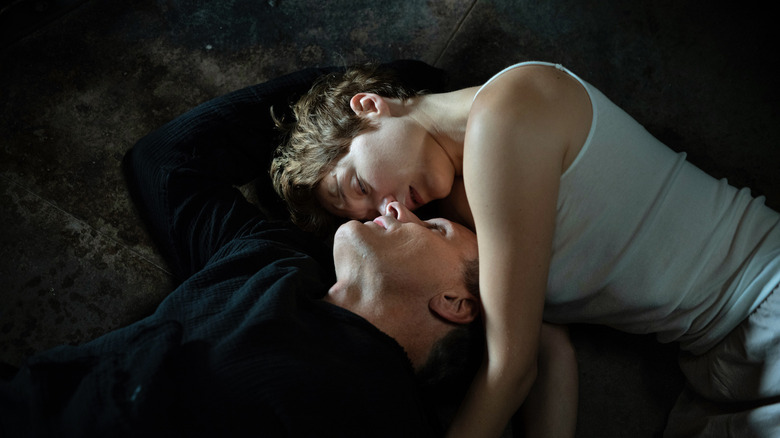
Since "Maps to the Stars," you've been doing everything but making films, exploring different avenues of creativity. What made you feel like now was the time to unleash "Crimes" on the world?
I blame [producer] Robert Lantos. He really nudged me and harassed me about making another movie together. And it's true, we had great experiences together making movies and [we've] known each other a long, long time. As he said in the [Cannes] press conference, we're even neighbors. He lives just around the corner from me.
So it was him sort of saying, "Have you read your old screenplay? Maybe you should consider doing that." And I thought that was ridiculous because I said, "[It's] 20 years old, I literally have not read it in 15 years. And it must be irrelevant now because it was science fiction. It was positing certain things that would devolve in the future. And now we've gone [to] a different place," and blah, blah. Then he said, "No, no, it's more relevant than ever." I thought, "That's a pretty good line. So I'm going to buy that line and I'm going to reread the script." And I did. And I thought, "He's right. Not only that, it's actually a pretty good script also," just in terms of the dialogue and the complexity. And I said, "OK, well, if you can raise the budget to do this and we can get casting, then I would do it."
And it still took them three years because it's so difficult to [find] financing. Netflix was certainly a force even three years ago, and that has had a huge impact on filmmaking and budgets and everything else. And then there was a pandemic, which did the same. Basically, two different things that did the same thing. But he did put it together and we did get casting.
'I Trust My Actors And I Cast Them Because I Trust Who They Will Be.'
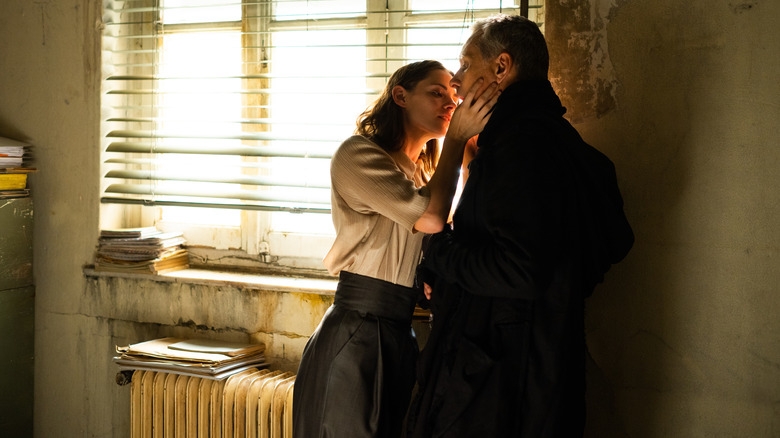
I have to ask about Kristen Stewart's character because she was such a highlight in this film. How much of that quirky character that she has was you and how much was her? What was the process there between you two?
It was really all her. The dialogue is the dialogue, and certainly she was described as a mousy, timid, bureaucrat girl, hiding behind her desk, not wanting to offend anybody, being very solicitous. Gradually, you realize that she's actually quite ambitious, quite aggressive in a passive aggressive way — and, in fact, quite subversive as it turns out. Her character does evolve. But how to play that was all her. She just did it. I didn't really have to tell her how to do it. She immediately knew how to play this character. And for me, a very lazy director, this is a gift. Honestly, if actors know what they're doing, I don't mess with them. It's just a matter of tweaking and shaping and stuff. And the choreography of scenes, of course, we work that out together. But I trust my actors and I cast them because I trust who they will be if I haven't worked with them before.
I read that you feel like you make films to just be an artist, [to] express that impulse and connect with other human beings. That mantra really is prevalent in this film, that idea of connection, especially in a perverse way, which is your specialty. With that in mind, what do you hope that the audience takes away from the ending of this film?
I honestly don't have any hopes. I really don't. I'm happy to have them take away whatever they take away. I'm sometimes entertained by the strange interpretations people have of things, like the ending of a film. And I've already had a few of those with this film. I haven't had [a] huge number of responses. Some people say that he's committing suicide. Others are saying, no, he's realizing that he's adapted to this toxic bar and actually can safely digest it now, and his chair is telling him that and he's accepting that he's evolving and he's becoming the new Brecken basically. That would be my interpretation. I wouldn't have thought, "No, he knows he's going to die." But if somebody really loves that and it makes the movie work for them, that's okay. I don't mind.
That's sort of the beauty of filmmaking, I think. Right?
It's the beauty of art in general.
"Crimes of the Future" premiered as part of the Cannes Film Festival. It hits U.S. theaters June 3, 2022.
Read this next: The 95 Best Horror Movies Ever
The post David Cronenberg On Pushing The Body To Its Limits In Crimes Of The Future, His First Film In 8 Years [Interview] appeared first on /Film.
Natalie Portman Waited A Decade For Her Black Swan Role To Become A Reality
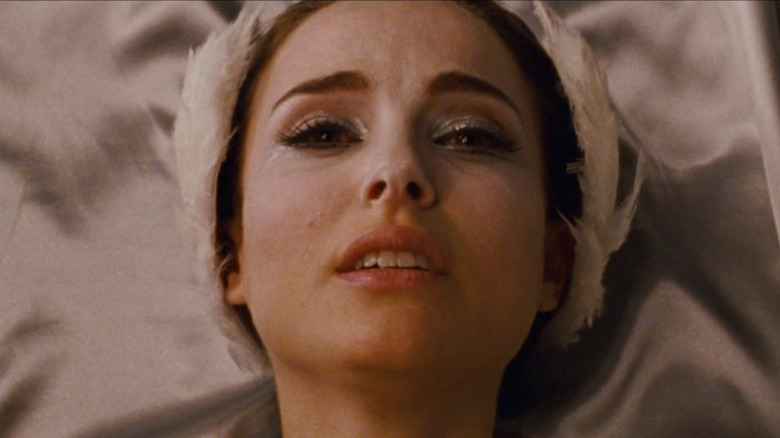
When actors or directors become big household names, we like to think they have the ability to get whatever movie they have in their heads put on screen. Occasionally that happens, but it is a rarity. Most cinema artists have to scrape and claw and beg to get their movies made, spending years upon years developing and honing the material. Even the greats like Martin Scorsese can spend decades hoping to get a single film made that they really care about.
Natalie Portman and Darren Aronofsky are not some anonymous upstarts by any means. Even at the turn of the 21st century, Aronofsky had made a pretty significant splash with his breakout film "Requiem for a Dream," and Portman had begun her transition from talented child actor in "Léon: The Professional" and "Heat" to full-on movie star after the release of "Star Wars: Episode I - The Phantom Menace." They were on a steady upward rise, and Aronofsky pitched Portman about this movie about a ballerina, which she was on board to take on.
It would end up taking about 10 years before the film finally made its way to the big screen in what we now know as "Black Swan," for which Portman won an Academy Award for Best Actress. While the typical story of something like this is trying desperately to find the financing to put on the film, that was not exactly the case with "Black Swan." Oh, they found plenty of resistance, but it ended up coming from a much different place. It was coming from the world of ballet.
Trying To Get A Foot In The Door
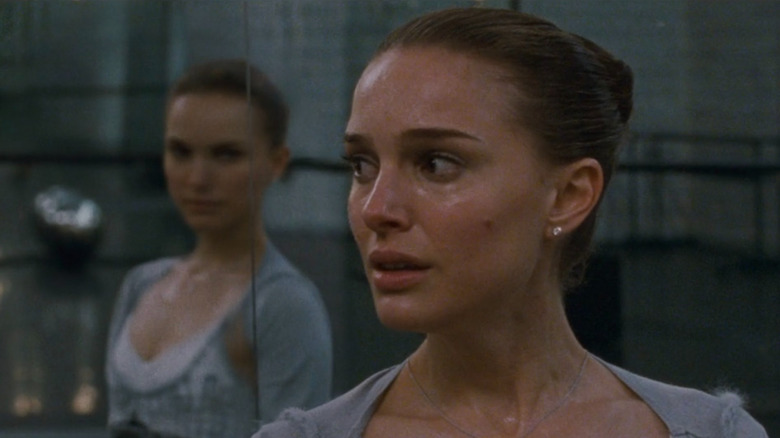
If you are a filmmaker worth your salt, you strive to do extensive research on a subject you wish to depict on film. For "Black Swan," Darren Aronofksy needed to learn as much as he could about the world of ballet, its peculiarities, and the personalities that exist within it. He could not just rely on Natalie Portman's own experience as a child dancer. However, he found a lot of obstacles in trying to find his way into truly learning the day-to-day lives of these people. In an interview with Collider, Aronofsky recalled the struggle with the ballet community:
"Most of the time, when you do a movie and you say, 'Hey, I want to make a movie about your world,' all the doors open up, and you can do anything and see anything you want. The ballet world really wasn't at all interested in us hanging out, so it took a long time to get the information to put it together. Over the years, Natalie would say, 'I'm getting too old to play a dancer. You better hurry up.' I was like, 'Natalie, you look great. It'll be fine.' And then, about a year out from filming, or maybe a little bit earlier, I finally got a screenplay together. That's how it started."
Based on how the ballet community is portrayed in "Black Swan," filled with ruthlessness and constant competition, I can understand why they would be resistant to having outsiders enter their doors. But that could also just be Aronofsky's perception of the community based on his experience and is completely false. My guess is it lies somewhere in the middle. Dancers get judged enough in their career. Why do they need an outsider observing them constantly as well?
Read this next: Horror Roles That Changed Actors Forever
The post Natalie Portman Waited A Decade For Her Black Swan Role To Become A Reality appeared first on /Film.
Michael Rosenbaum Couldn't Have Cared Less About Landing Smallville's Lex Luthor Role
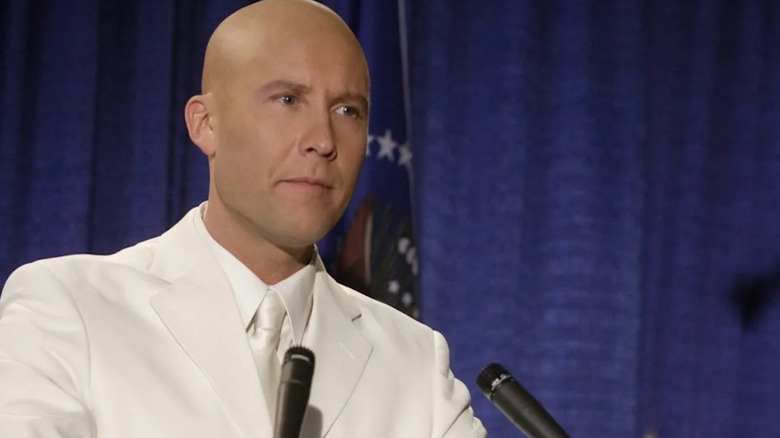
They say a hero is only as good as their villain, and few comic book Big Bads have been portrayed with the same level of complexity as Michael Rosenbaum's Lex Luthor in "Smallville." The Superman prequel series ran for 10 seasons, beginning in 2006 on The WB and wrapping up on The CW in 2011. Starring Tom Welling as Clark Kent, the show traced his journey through high school and beyond, sticking to its "no tights, no flights" mandate right up until the end.
While "Smallville" certainly drew from comic lore, the TV landscape was dramatically different in 2001, without the same pressure to stick to DC continuity. In fact, "Smallville" made some pretty drastic changes to Clark's mythology, perhaps most notably centering much of those earlier seasons on the friendship between the young hero and his comic book archnemesis, Lex Luthor. A friendship between the two barely existed in the comics previously and certainly had never been thoroughly explored.
"Smallville" made Lex a vital piece of Clark's story from the very first episode. After he loses control of his car, hitting Clark in the process, they both go over the bridge. Of course, Clark is unharmed and saves Lex from drowning. Clark's survival is a mystery that would tug at Lex until it unraveled their friendship completely.
Rosenbaum managed to make Lex sympathetic, even as his actions grew increasingly villainous. This was quite different from how the character had previously been portrayed in movies, comics, and television, and while some of that was certainly due to the writing, it was Rosenbaum's nuanced performance that made Lex beloved by fans. Because he was so integral to the show's success, the actor's initial lack of interest in the role may surprise you. What happened during that audition?
'When You Don't Care, You Just Have This Confidence'
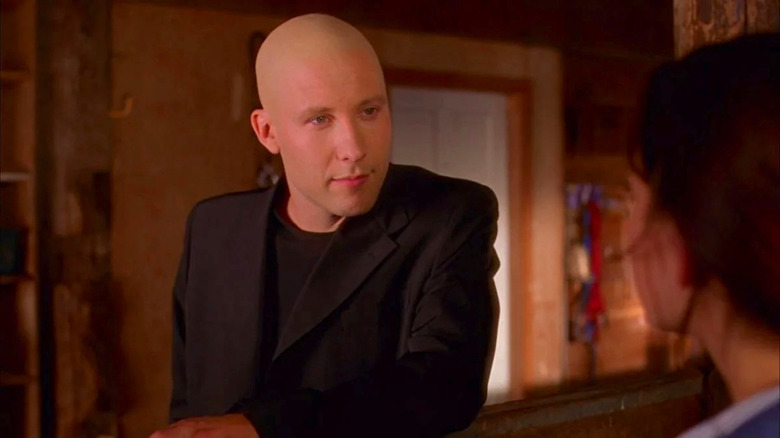
According to Miles Millar (who developed "Smallville" with Alfred Gough), Rosenbaum wasn't their original choice to play Lex Luthor. Millar told The Hollywood Reporter that initially, they thought the role was going to future "Chuck" and "Shazam" star Zachary Levi. However, his audition was "kind of a disaster," so the search continued.
"Smallville" may have needed a Lex, but Rosenbaum wasn't exactly psyched to audition. He told THR:
"I had done other shows for The WB at the time. They said they are doing a show called 'Smallville.' I thought, 'Oh this is going to be cheesy.' They wouldn't send me a script, and I wasn't really interested. Finally they had me go in, and I didn't care. When you don't care, you just have this confidence that you're not throwing all your chips in going, 'Oh my God, I got to get this part.'"
Welling then chimed in, saying, "I've never seen you not care about anything you choose to do. What I think you mean is you weren't attached to the result. So you were free."
Rosenbaum continued:
"The casting director is like, 'Sit here,' and I go, 'Naw, Lex wouldn't do that.' And she's like, 'Well I have to relight,' and I go, 'Would you mind?' And she relit the room and I had to wait outside. I came back in and kind of just took over the room. I go, 'What are 700 other guys doing wrong that you are auditioning?' And they said, 'Well, we want a sense of charisma, we want a sense of danger, we want a sense of comedic timing.' I only had three pages to work with. I circled, 'I'll be dangerous here, I'll be funny here, I'll be charming here.'"
'Lex Luthor Does Not Come Back For A Second Audition'
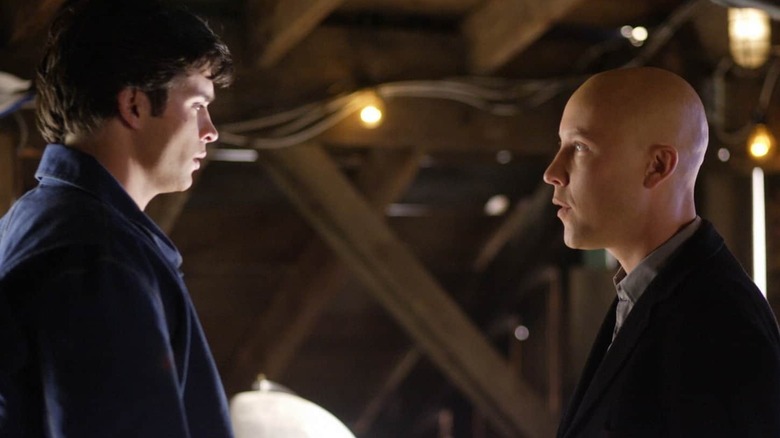
Gough told THR Lex was actually the last "Smallville" role they cast, but when Rosenbaum came in, "He literally hit all the right notes and he was perfect." Rosenbaum knew the audition had gone well, but that didn't mean he was willing to jump through more hoops. He said:
"My agent called. 'They want to screen test you.' I said, 'I'll never have an audition as good as I just had. Tell them to rewind the tape.' So he goes, 'You're going to lose this role. You know that.' I don't recommend this to any other actor, and I would never do it again, but I said, 'Rewind the tape.'"
Welling quipped, "Lex Luthor does not come back for a second audition, OK?"
Rosenbaum agreed, "Exactly. He just wouldn't do it. It's out of character."
It's understandable that after Rosenbaum gave an audition he was proud of, the actor doubted he could recapture that energy, especially when so much of it had relied on an initial lack of attachment to the part. Charisma, danger, and comedic timing is quite a tall order, but I know "Smallville" fans would agree that Rosenbaum rose to the challenge. Ten seasons is a long time to be on the air and while "Smallville" certainly achieved greatness in its later seasons as well, the series never found another villain truly worthy of Tom Welling's aspiring Superman.
There have been other memorable Lex Luthor performances, specifically Gene Hackman in the "Superman" movies, of course. That said, Rosenbaum made me actually root for Lex. I wanted his friendship with Clark to endure, despite knowing how the story inevitably had to end. Thankfully, Rosenbaum's audition strategy payed off, or we all might've been robbed of his perfect portrayal of Lex Luthor.
Read this next: The 15 Most Anticipated Comic Book Movies And Shows Of 2022, Ranked
The post Michael Rosenbaum Couldn't Have Cared Less About Landing Smallville's Lex Luthor Role appeared first on /Film.
Yvonne De Carlo Couldn't Help But Cringe At Her Munsters Makeup
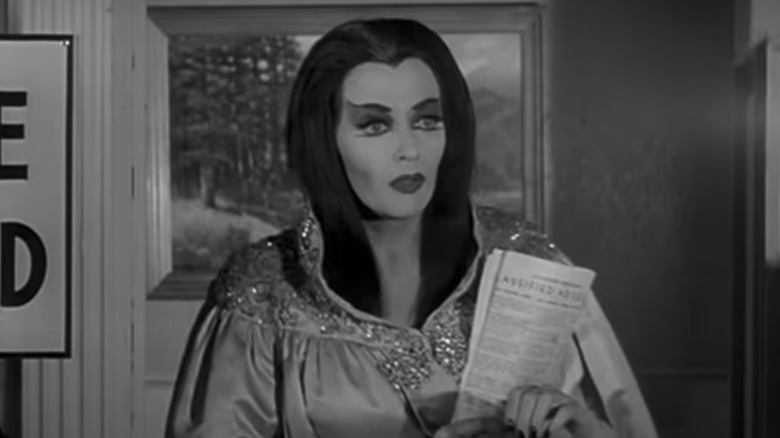
We're getting closer to the latest movie version of "The Munsters" from Rob Zombie, and it's time to take a look back at the old TV series that ran from 1964 to 1966 with 70 episodes. The cast included Fred Gwynne as Herman Munster, Yvonne De Carlo as Lily Munster, Al Lewis as Grandpa, Butch Patrick as Eddie Munster, and Beverley Owen as Marilyn Munster, who was replaced by Pat Priest after 13 episodes. The series didn't last long on TV originally, but it has lived on through syndication, spawning a number of films. The characters are still cosplayed by fans at geek and horror conventions, and Lily Munster is pretty! I say this because De Carlo didn't think she was in that makeup.
Goth wasn't really a thing back in the 1960s. Certainly you could find people who loved the aesthetic, but the subculture didn't really find its footing until the 1980s. There is far more appreciation for Lily Munster's makeup and costumes than back when the TV series was airing, but now it's just classic. I literally walked past someone yesterday who had very similar makeup (and was absolutely rocking it). De Carlo's issue with the makeup was strongest when it was seen in color, however, as it was in the film "Munster, Go Home!"
Bride Of Frankenstein's Monster
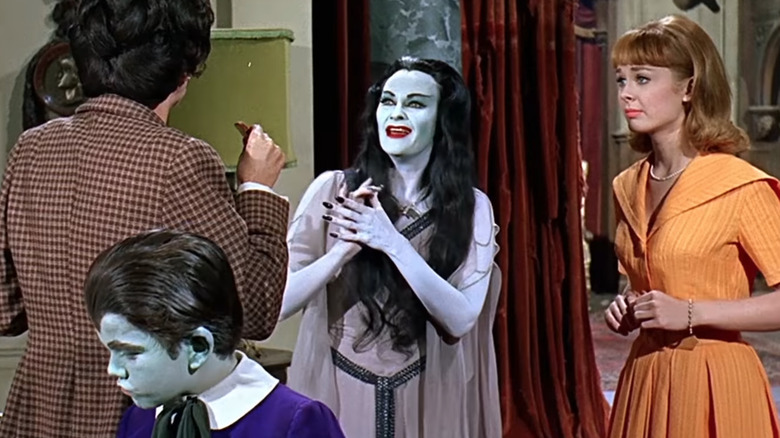
In James Bawden and Ron Miller's book, "You Ain't Heard Nothin' Yet: Interviews with Stars from Hollywood's Golden Era," Yvonne De Carlo was asked about being a part of the TV series. She said:
"I'd wanted a TV series. But this? I wasn't sure. I had a hard time getting into the rhythm of it. Then director Joe Pevney suggested I play Lily as a sort of mixed-up Donna Reed character and not overdo anything. When I saw the first pilot in a screening room I cringed at my makeup. It took two hours of makeup to make me seem like that. It ran for two huge seasons, the CBSS quarreled with the creators about reruns and we got canceled. A movie in color in 1966 [Munster, Go Home!] showed off everything in reds and greens on my face. Boy, was I ugly."
I don't think anyone can look at De Carlo and use the word "ugly." Still, there was a look that was acceptable for "beauty" in Hollywood back then, and this wasn't it. Part of it, as she said, was when the show went from black and white to the color of the film.
Reds And Greens
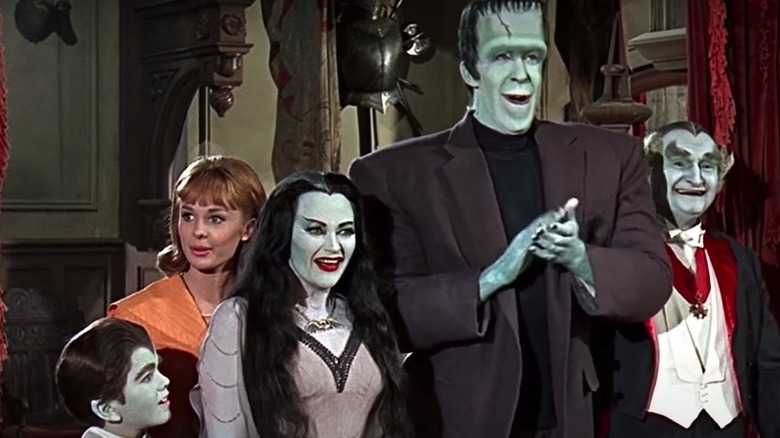
Color televisions changed a lot of things in the makeup industry, but in the beginning, bright colors were used everywhere. Plus, the green tint of everyone else's skin made Marilyn's non-monster status more obvious. In the black-and-white series, the differences were enhanced with the intense contouring, the clothing, and the winged and heavy eyebrows.
Yvonne De Carlo is right when she mentions the reds and greens of the film "Munster, Go Home!" It's not as flattering, and the decision to make Lily, Grandpa, and Eddie green didn't do them any favors.
Makeup for black-and-white film is very different from what one would use for color film, though, and that might be what she's talking about on the series side. For instance, red would often show up as black. Grease paint or very heavy foundation (with a blue or lavender powder over it) would be used to cover any redness on the skin, which looked very blotchy. Lipstick would often be a gold color to simulate natural lips. Blue would sometimes be used for shadow and contour all over the face, depending on what the film picked up, giving a clownlike appearance.
Although there aren't color photos that are readily available of De Carlo as Lily Munster when she was done up for the black-and-white TV series, but going by what was actually used, it probably wouldn't have been attractive. Whatever it looked like in person, however, it's still stunning on TV.
Read this next: Actors Who Died In 2021
The post Yvonne De Carlo Couldn't Help But Cringe at Her Munsters Makeup appeared first on /Film.
Hayden Christensen Would Be Open To Leading A Darth Vader Series
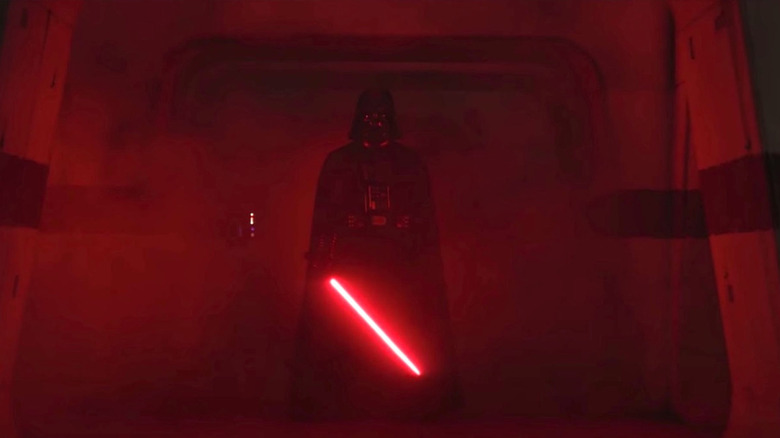
No matter how many years pass, it all seems to come back to Darth Vader. Almost exactly 45 years (!) since making that legendary first appearance aboard the Tantive IV in the original "Star Wars," the biggest bad of them all has maintained an iron grip on our collective psyche throughout multiple generations of fans. And no wonder, given that instantly recognizable visual design, the esteemed voice acting of James Earl Jones, and healthy addition of tragic Shakespearean drama on top of it all, traced all the way back to Hayden Christensen's performance as Anakin Skywalker in the prequel trilogy.
Our last live-action glimpse at Vader came about in 2016's "Rogue One: A Star Wars Story," as he cracked some typically groan-worthy dad jokes and mowed down an entire hallway of Rebel soldiers. The forthcoming "Obi-Wan Kenobi" series will once again bring back the classic villain ... although, this time around, Christensen will reprise his role as the fallen Jedi who's now dead-set on hunting down his former Master. It doesn't appear as if future "Star Wars" stories will be able to resist the temptation to bring the Sith lord back as much as possible (he's next scheduled to appear in the upcoming "Ahsoka" series, as well), and as much as I balk at the franchise constantly looking backwards ... maybe we can make an exception, just this one time.
Christensen's return in "Obi-Wan Kenobi" immediately helped drum up hype for the new series, which is set to premiere tomorrow. But what about leading a new series of his own? By his own admission, the actor would be all for it.
'There's Certainly More There To Explore'
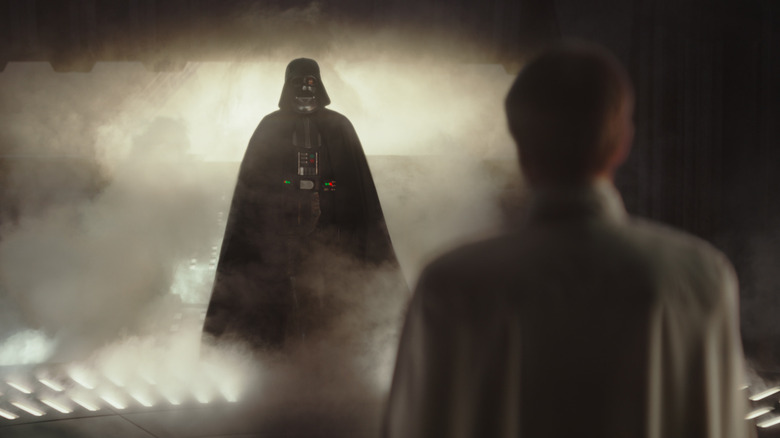
Ever since Disney acquired "Star Wars" and jump-started the franchise once again, every hint and tease and brief appearance of Darth Vader has managed to set the fandom on fire, leading to renewed calls for either a new movie or a new series of his own. (Never mind that George Lucas himself once gave us an entire trilogy of films fully centered on the villain's origin story, of course!) Thus far, however, Vader has only been relegated to various supporting roles on both the big screen and throughout recent animated shows, novels, and comic books. So what about serving as the main character of an entire story, for a change?
ET Canada (via Total Film) asked Hayden Christensen precisely this question, and the actor's response ought to come as no surprise for someone who seems so genuinely humbled to have been asked to return.
"Absolutely, I think this is a character that resonates in our culture in a very profound way, and there's certainly more there to explore. There are so many other stories that have been told in these other mediums, and I would love to get to continue my journey with him."
"Obi-Wan Kenobi" seems as if it will lead to more storytelling opportunities down the line, which would provide a natural way to keep Vader "alive" (so to speak) for even more appearances in the future. Christensen's answer is diplomatic enough, but it's hard to dispute that legions of fans would love to see a Christensen-starring, Vader-centric project come to fruition.
Until then, we have "Obi-Wan Kenobi" to tide us over when it premieres on Disney+ May 27, 2022.
Read this next: Star Wars Movie Villains Ranked Least To Most Powerful
The post Hayden Christensen Would Be Open to Leading a Darth Vader Series appeared first on /Film.









